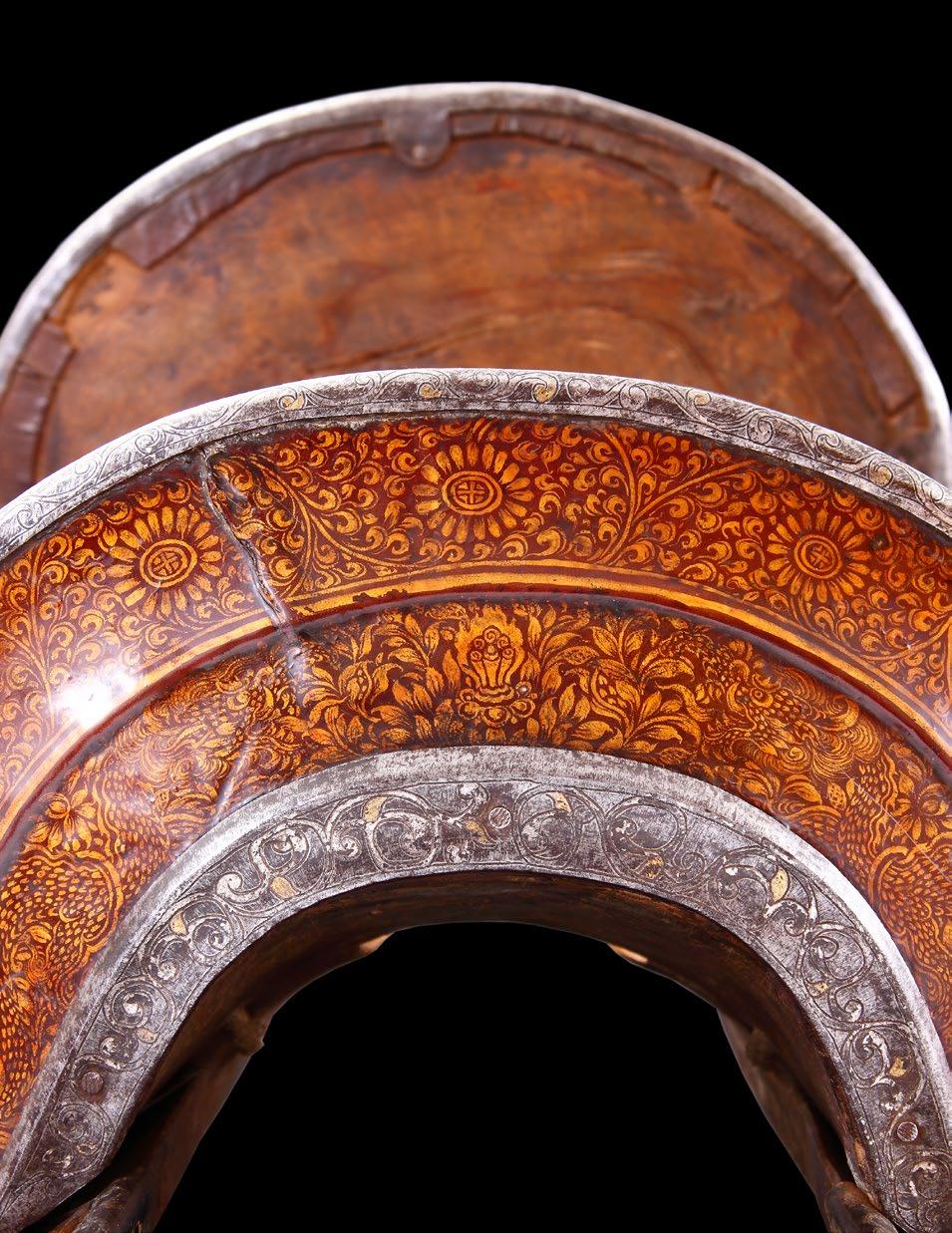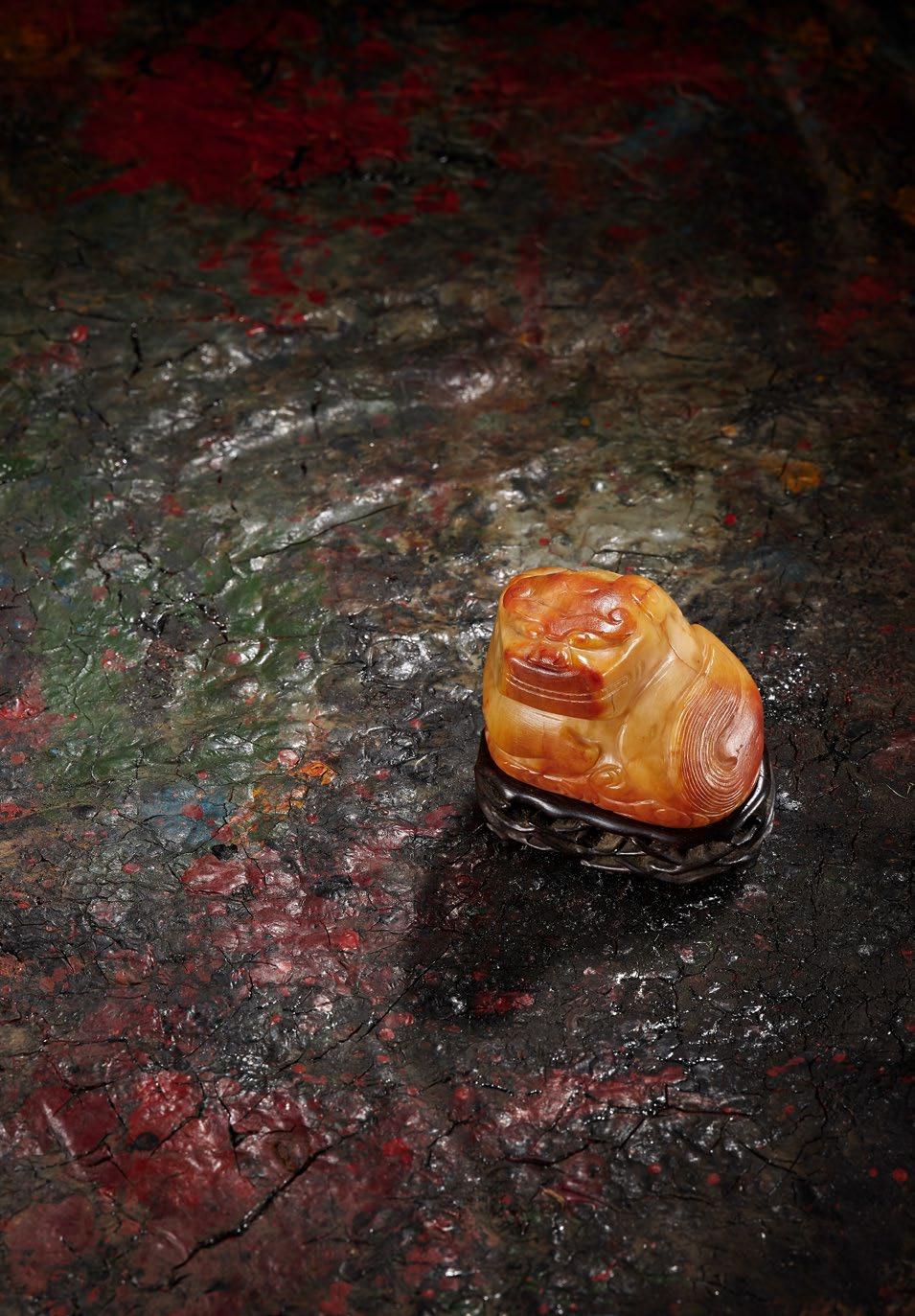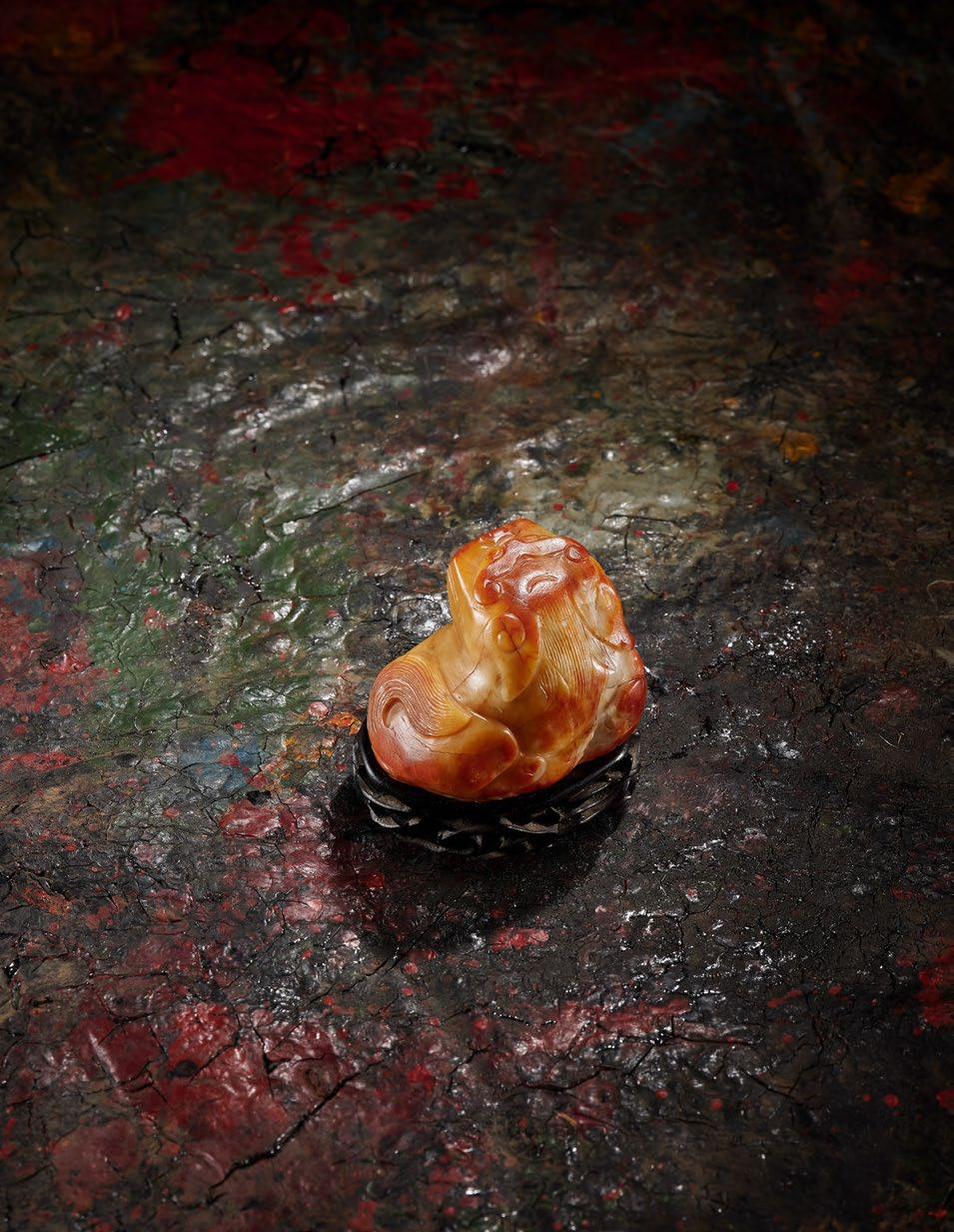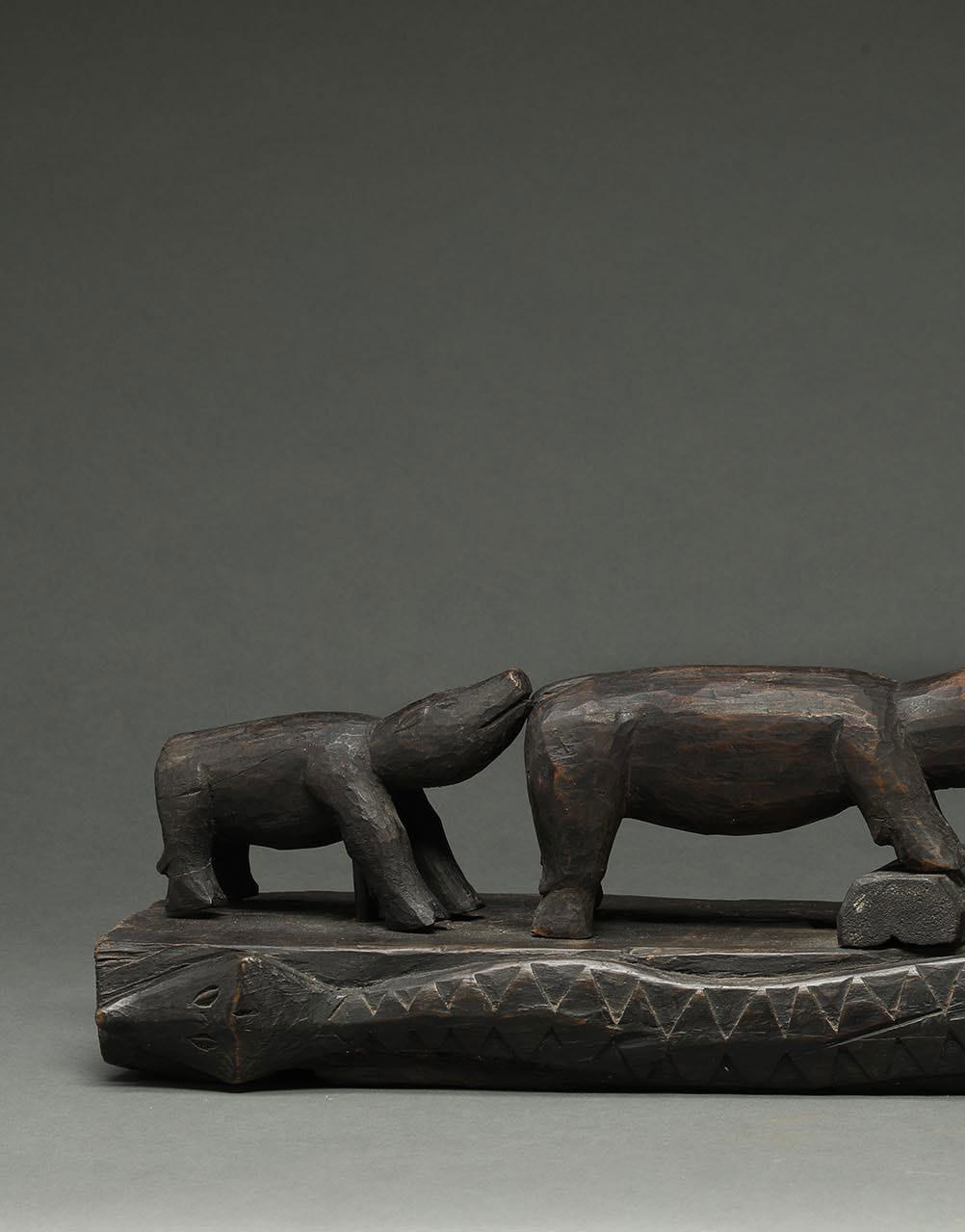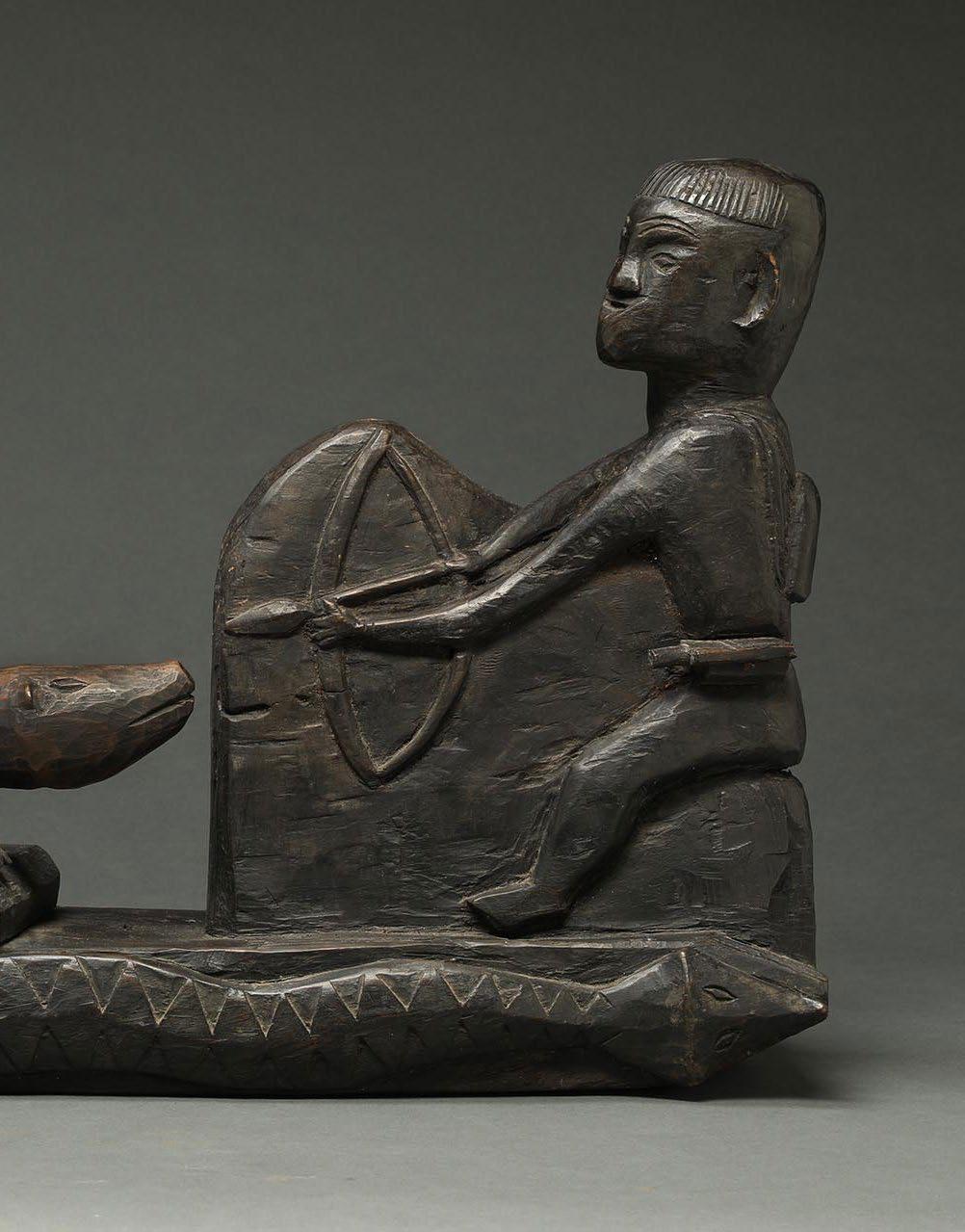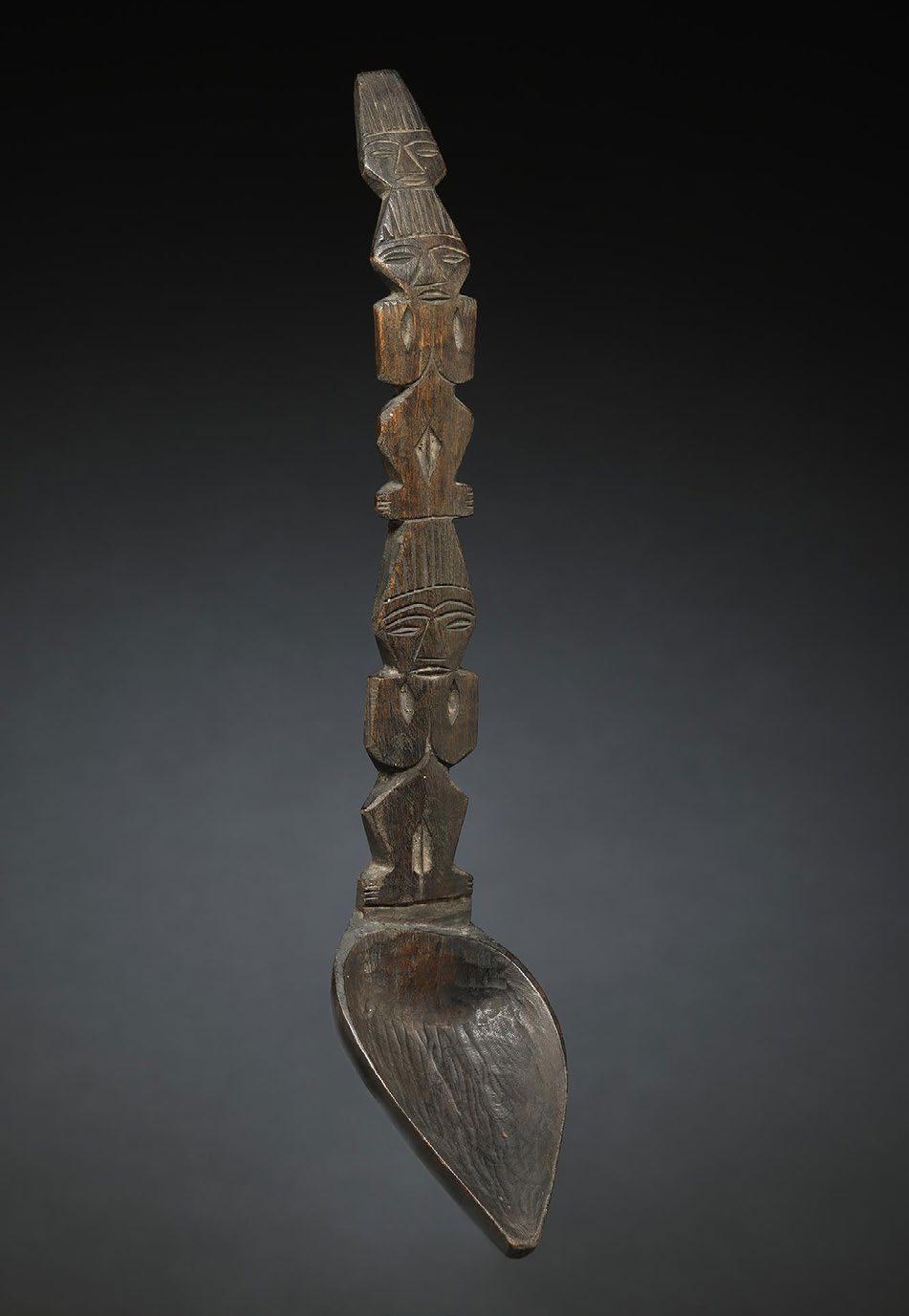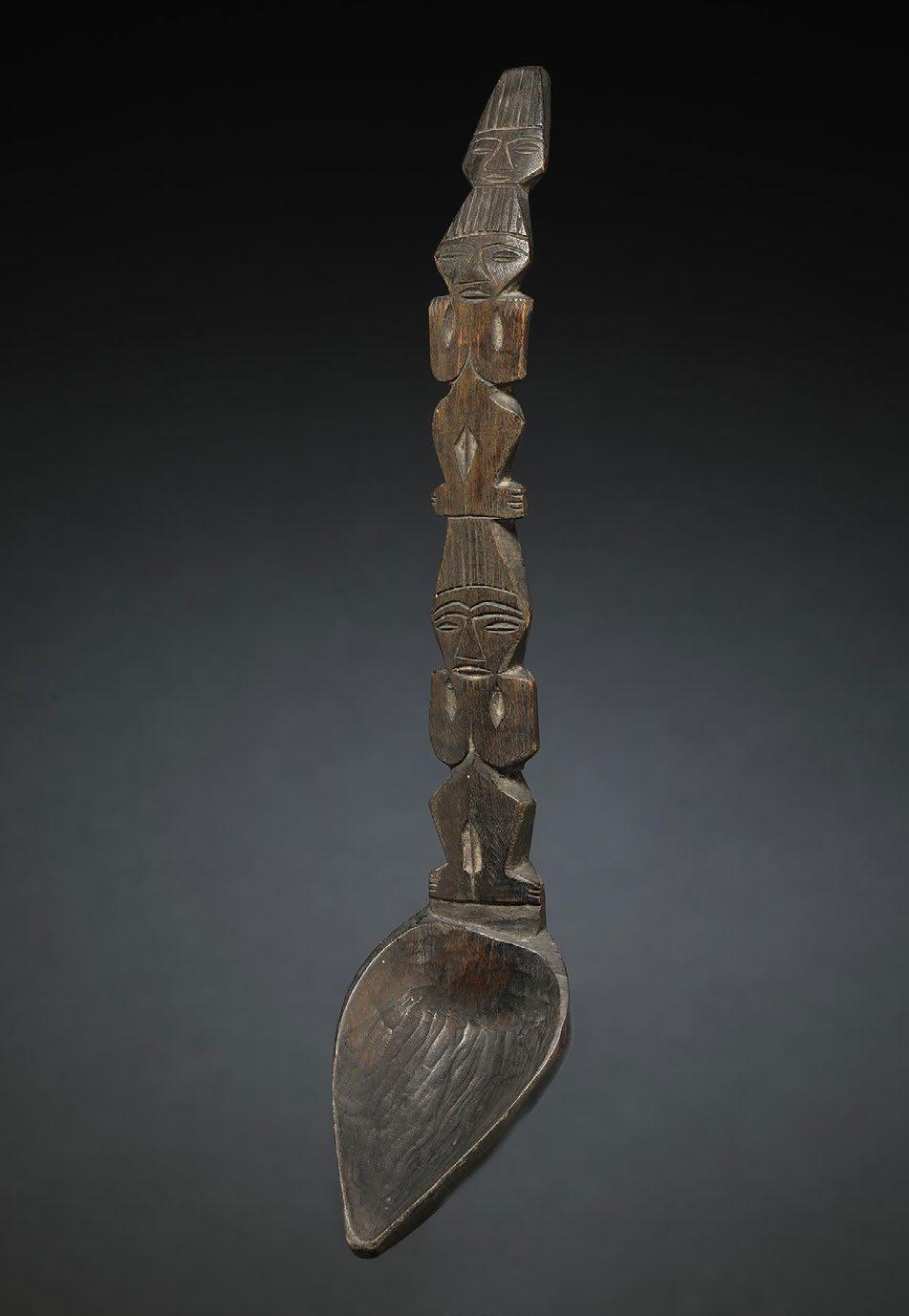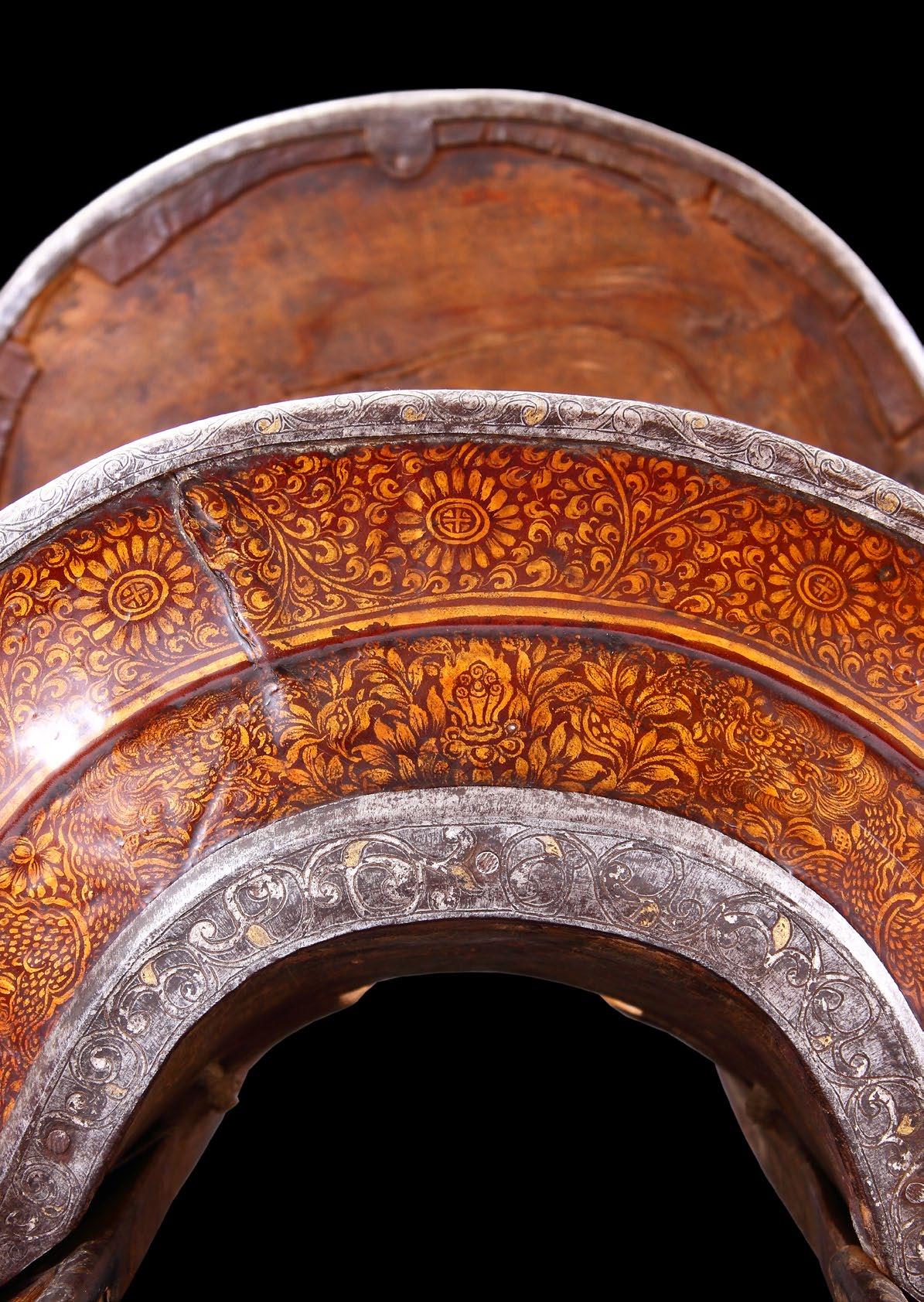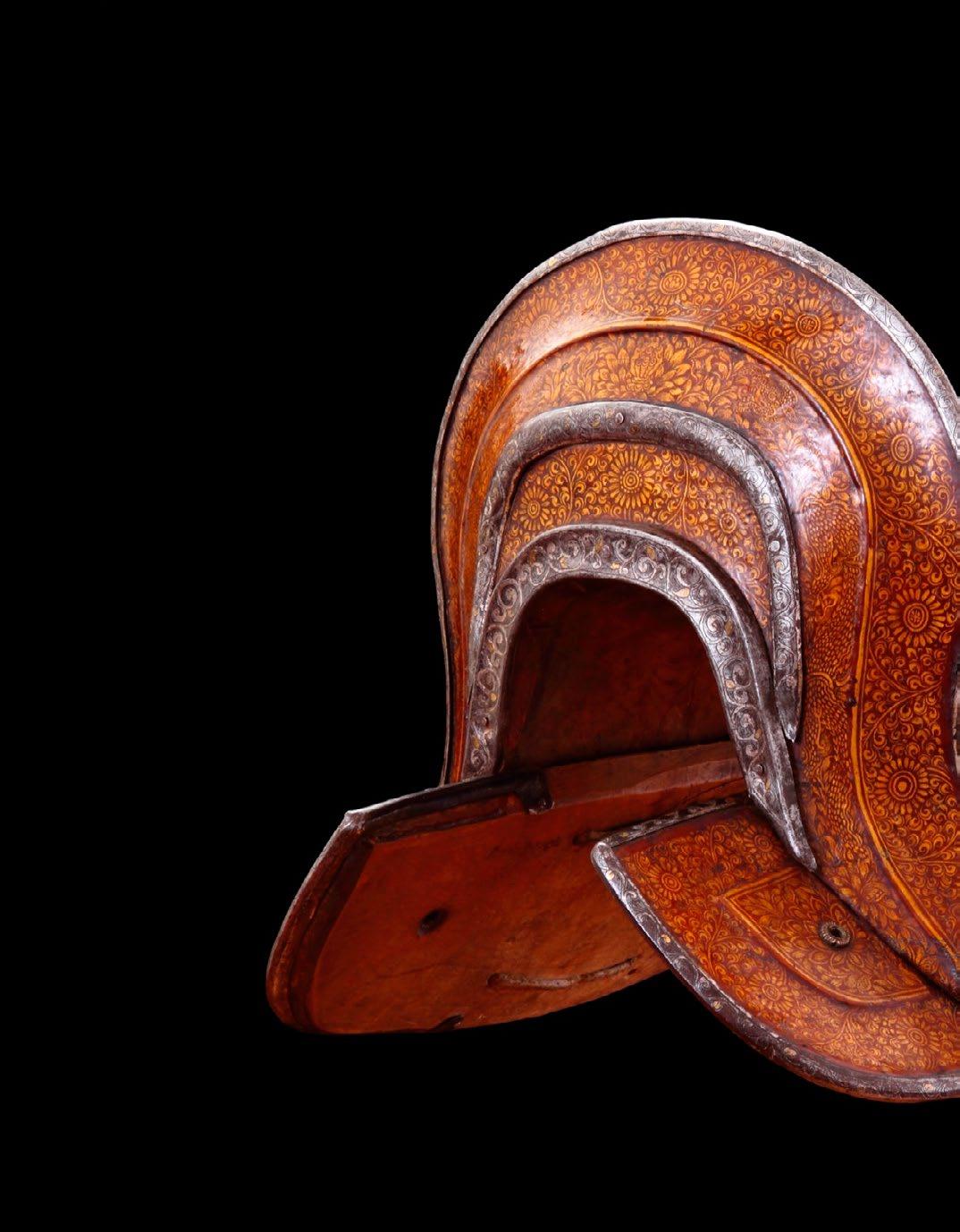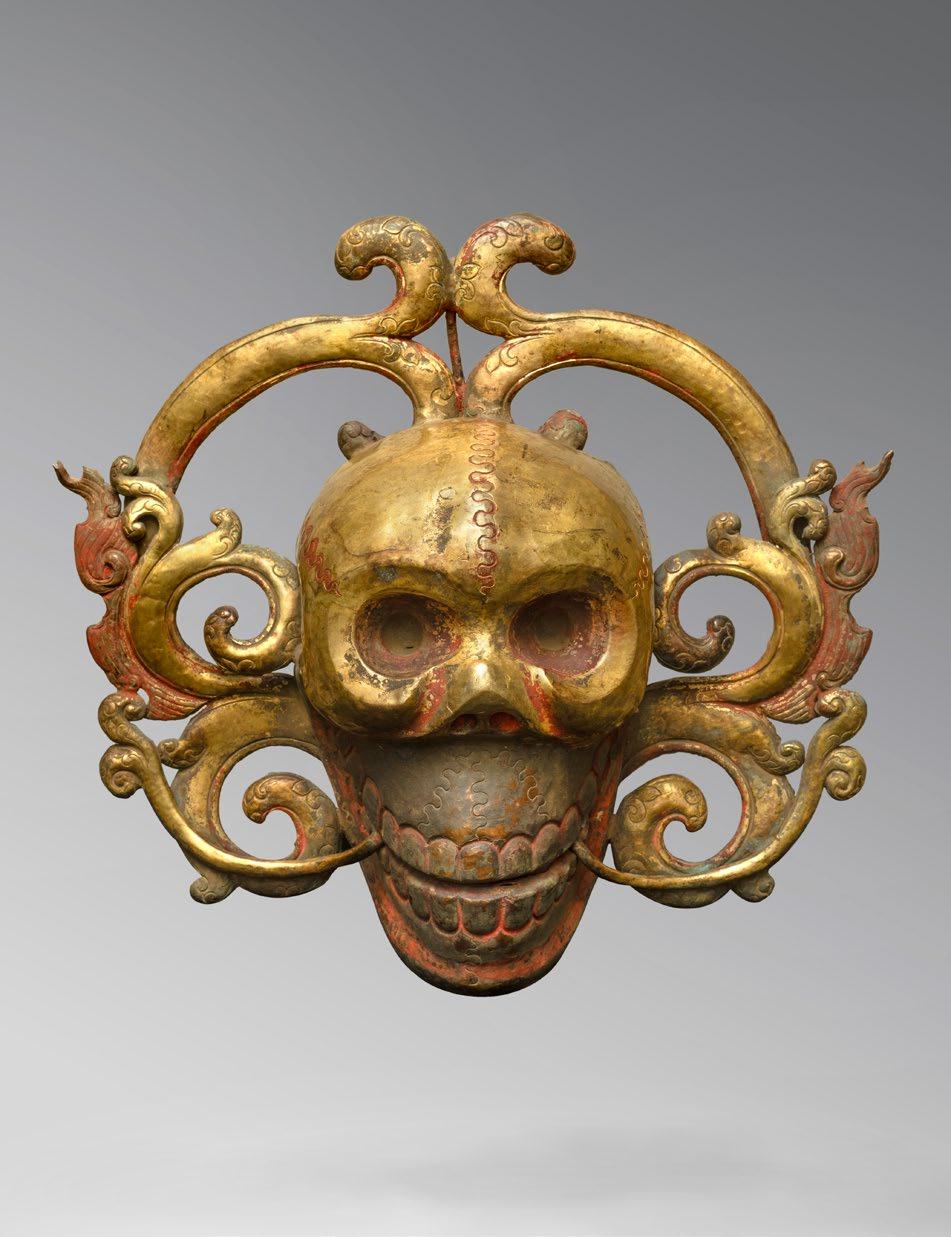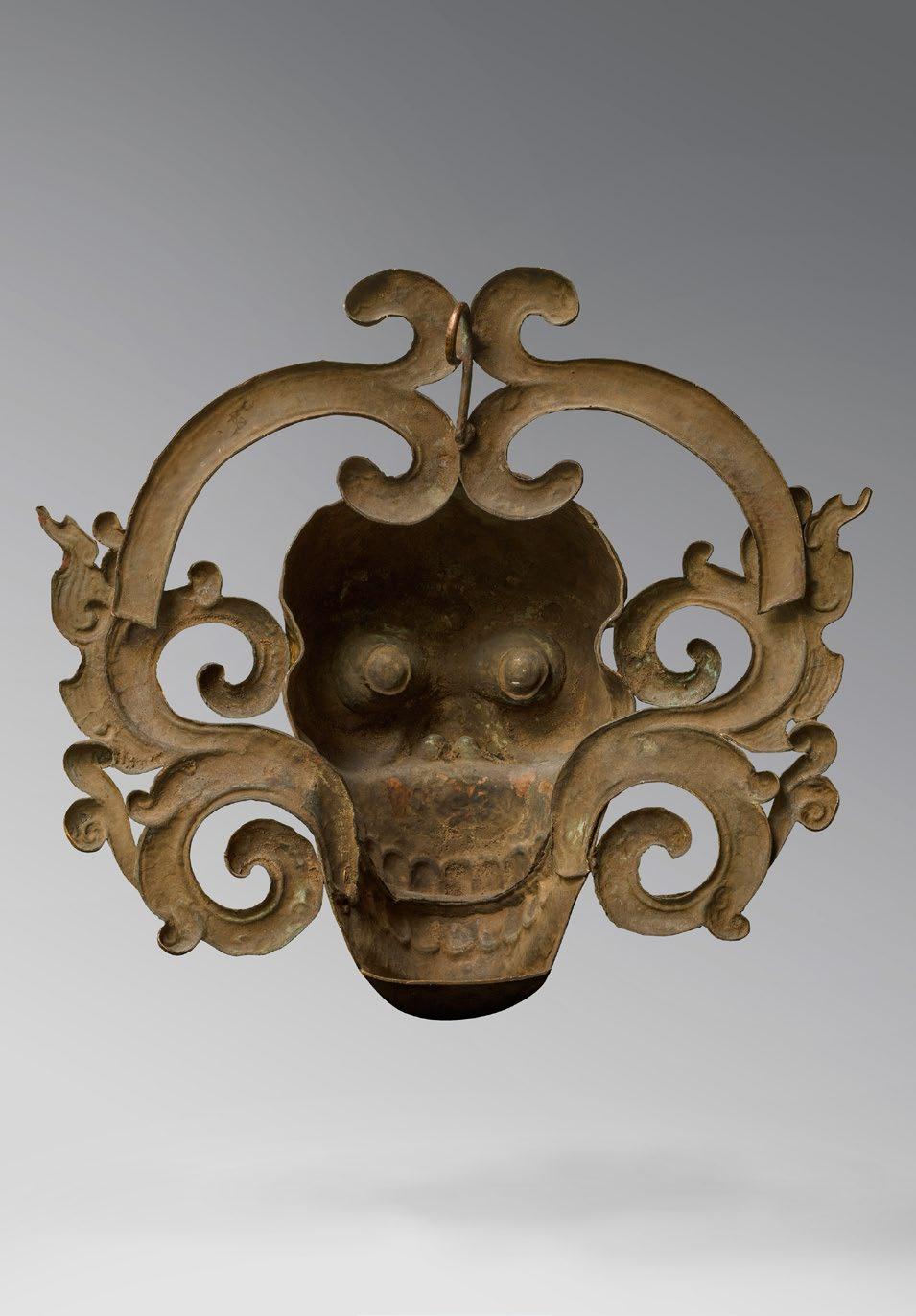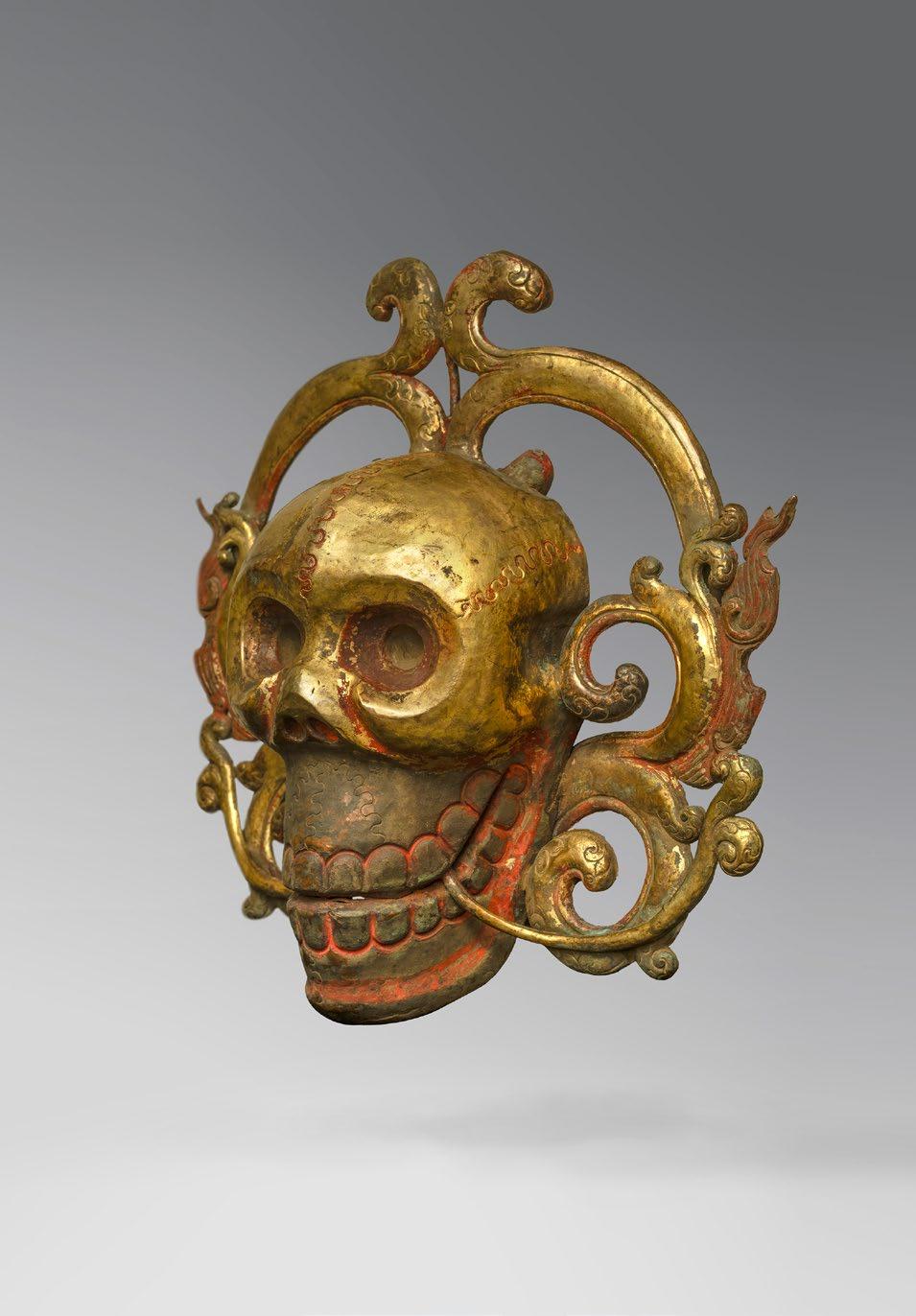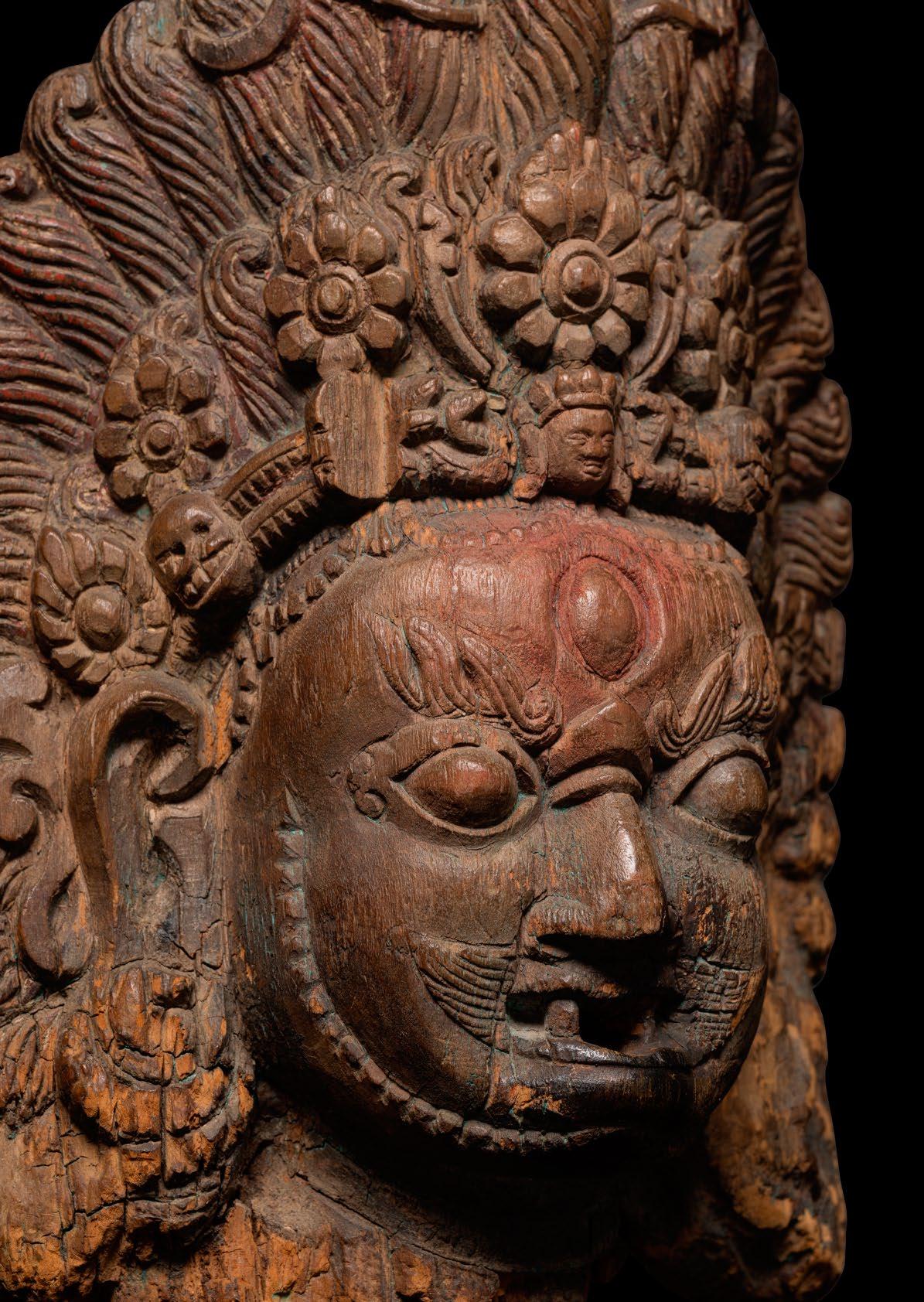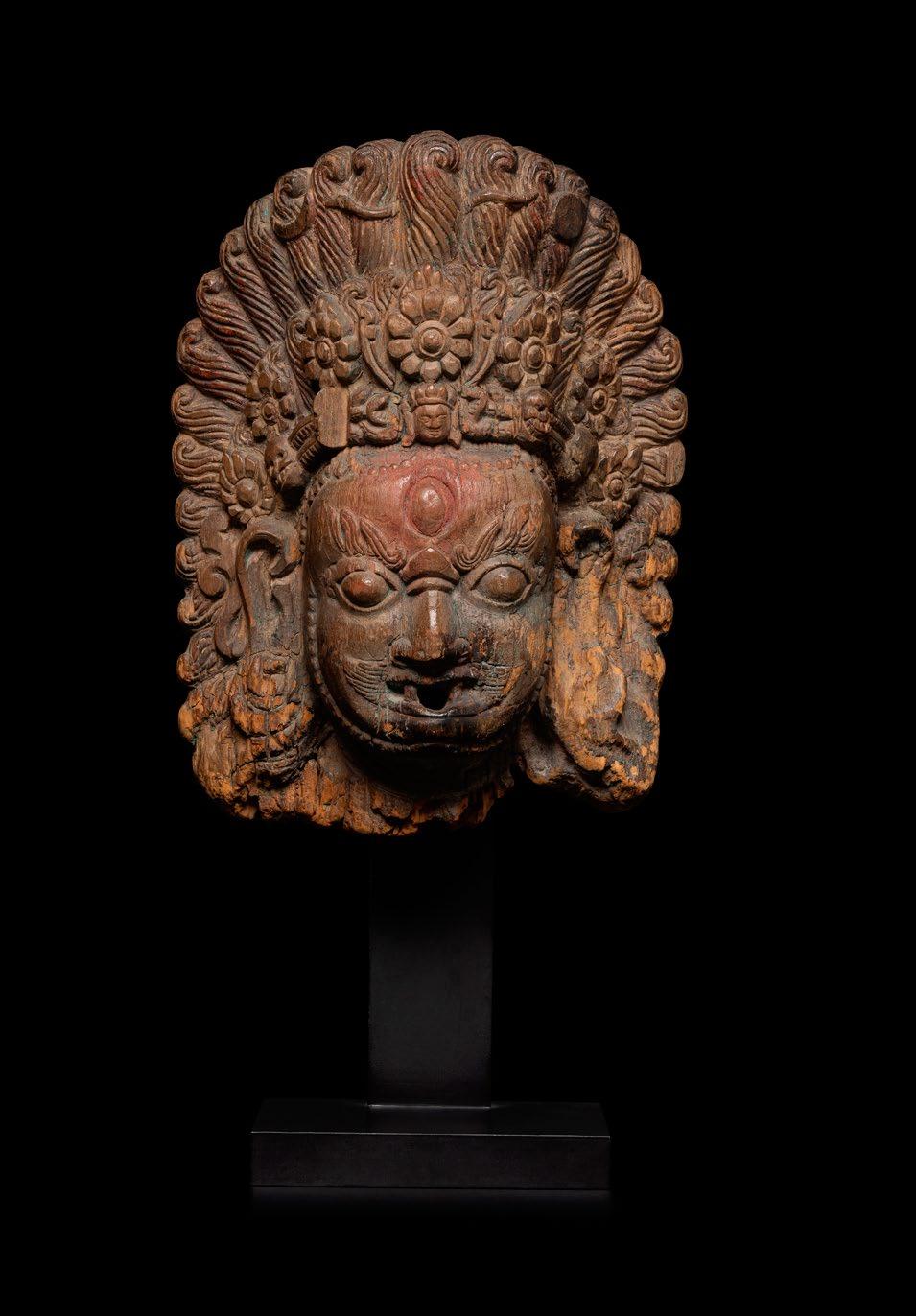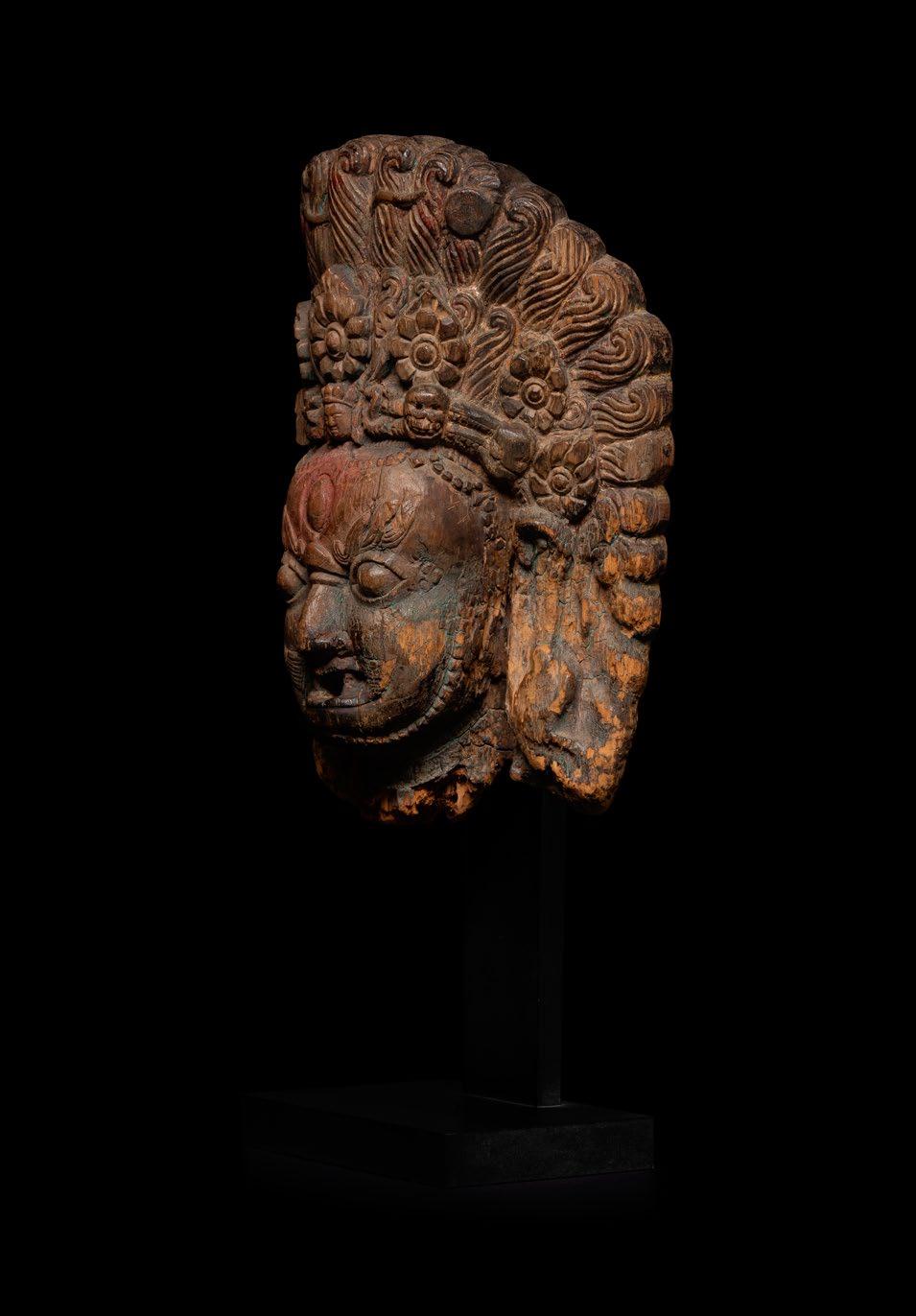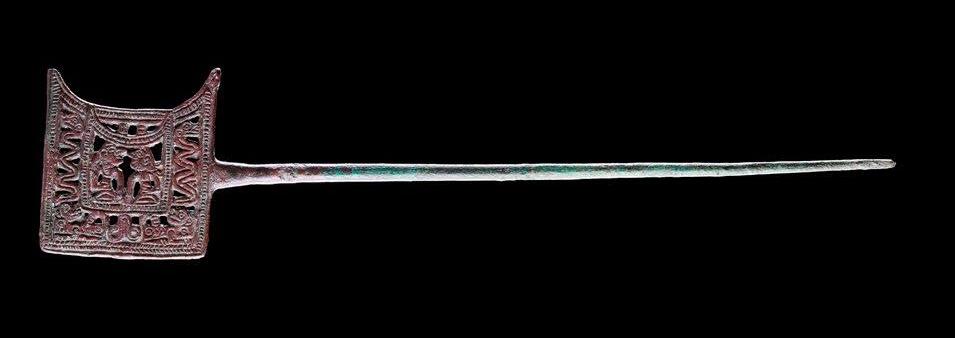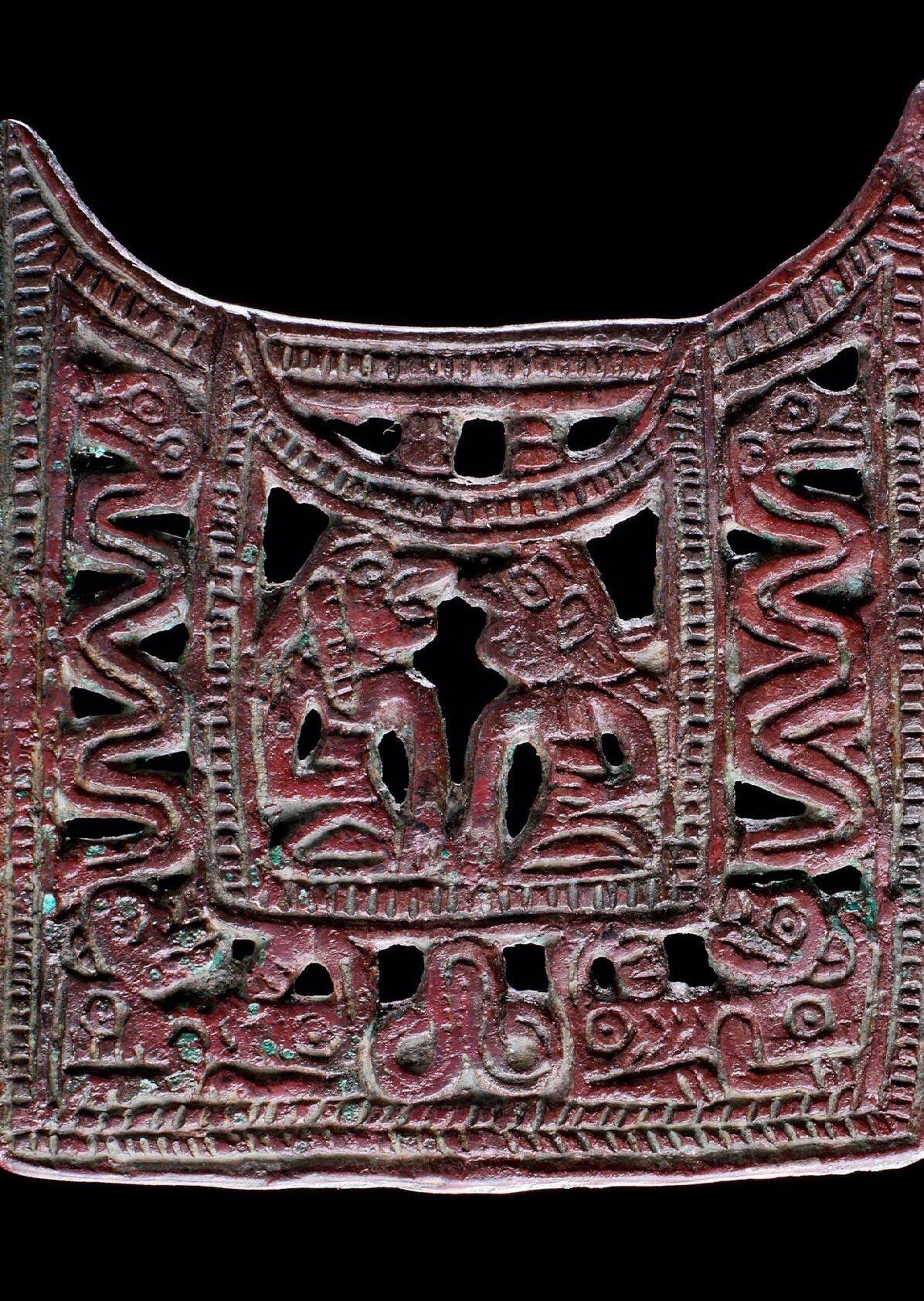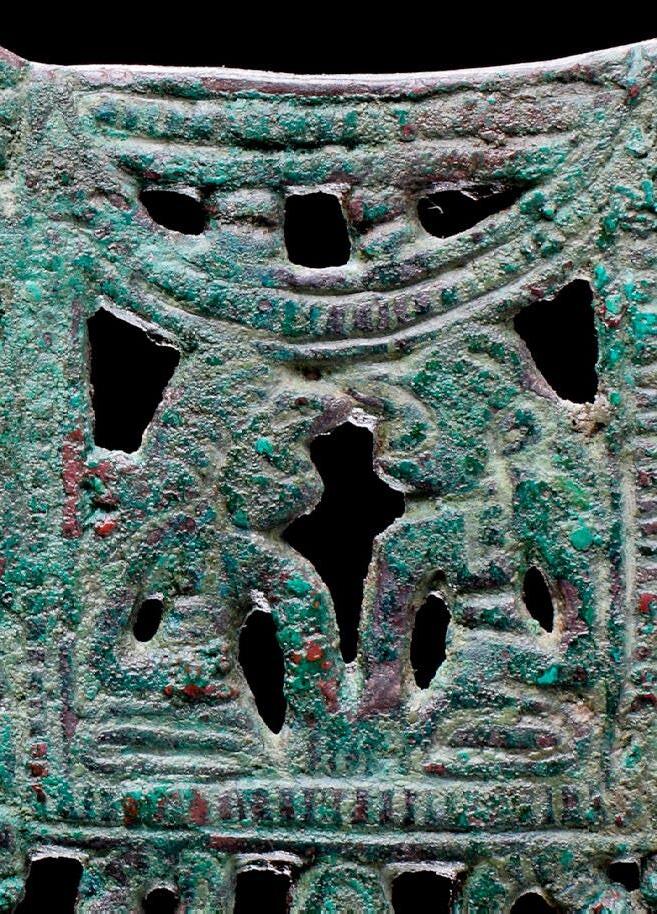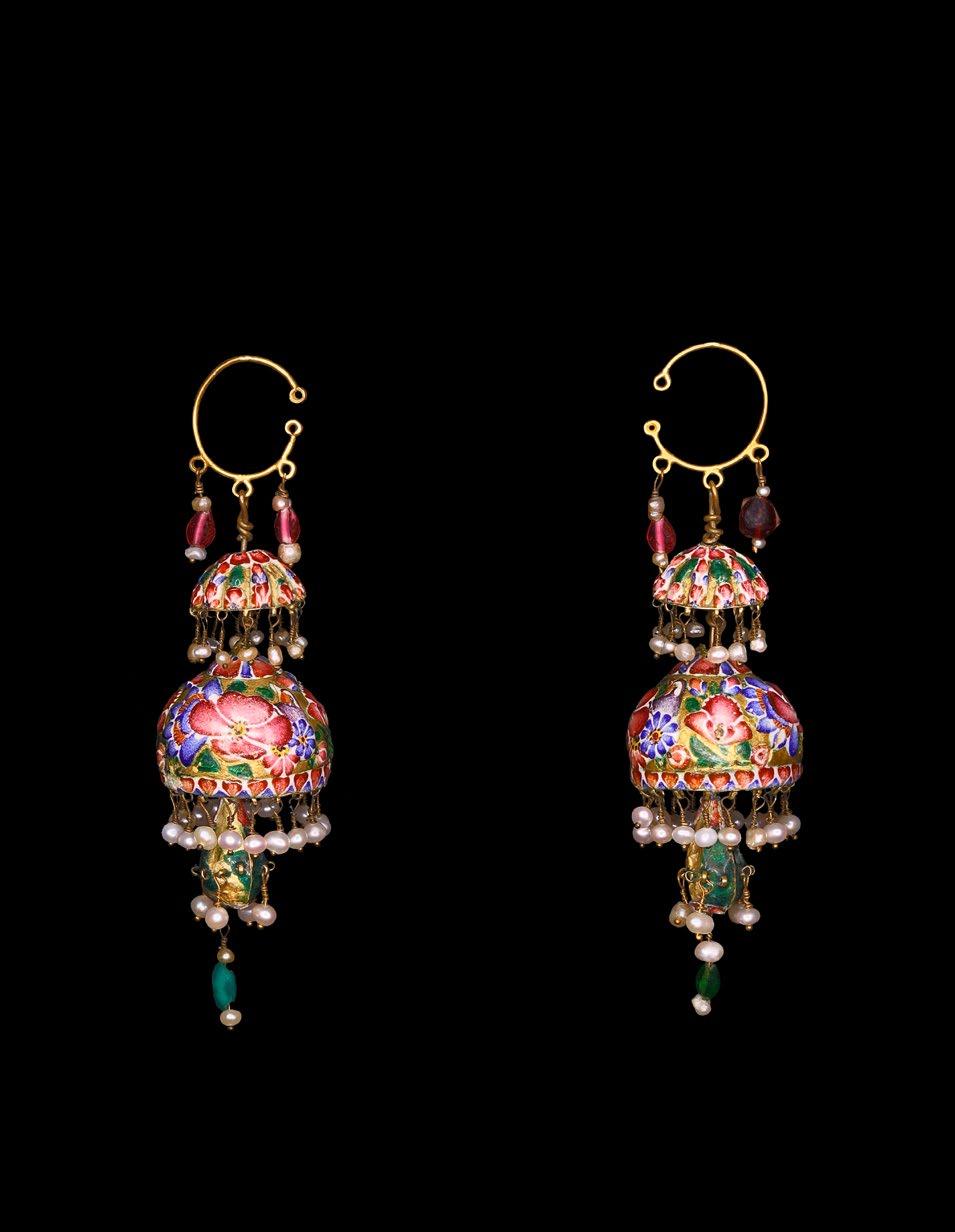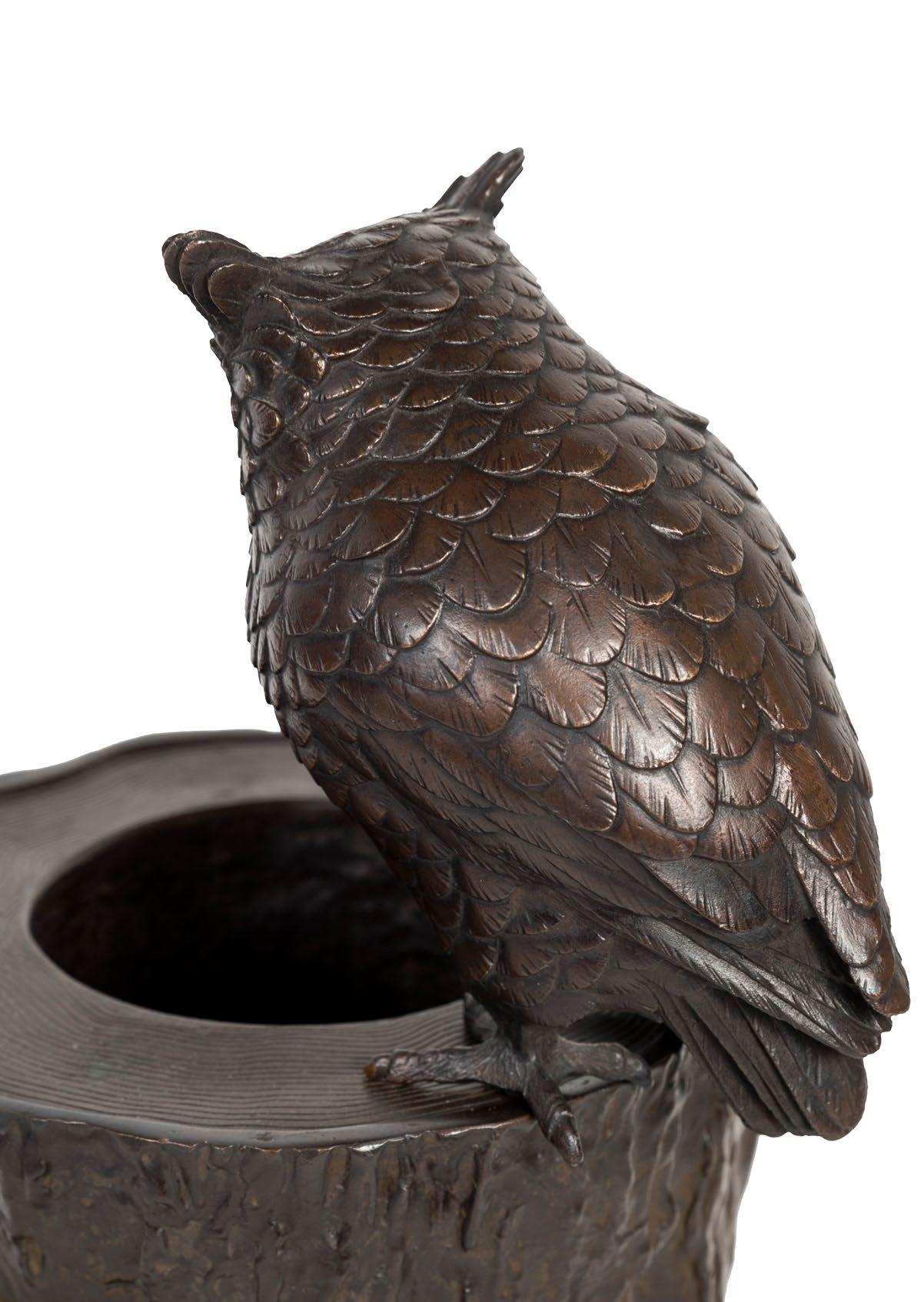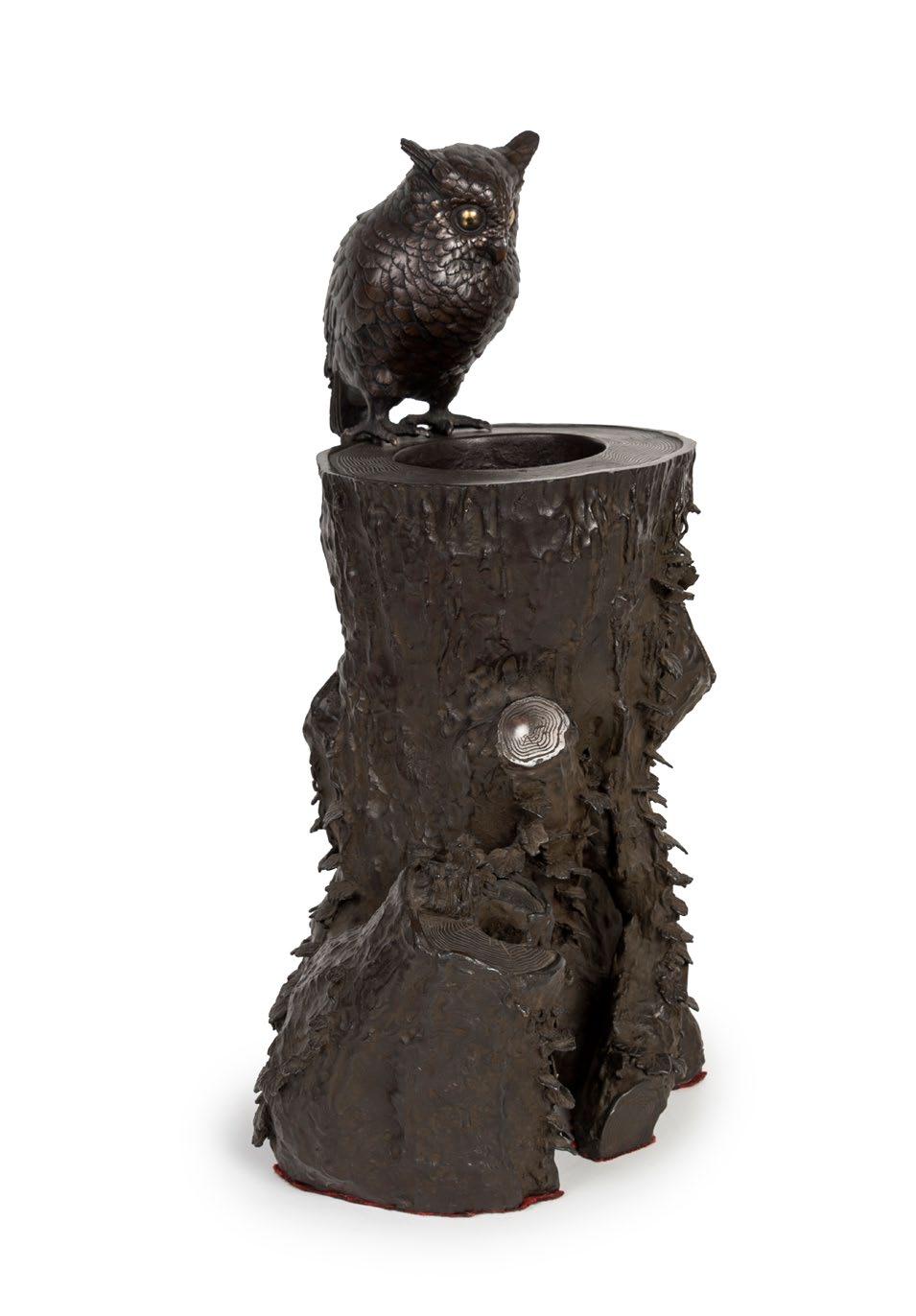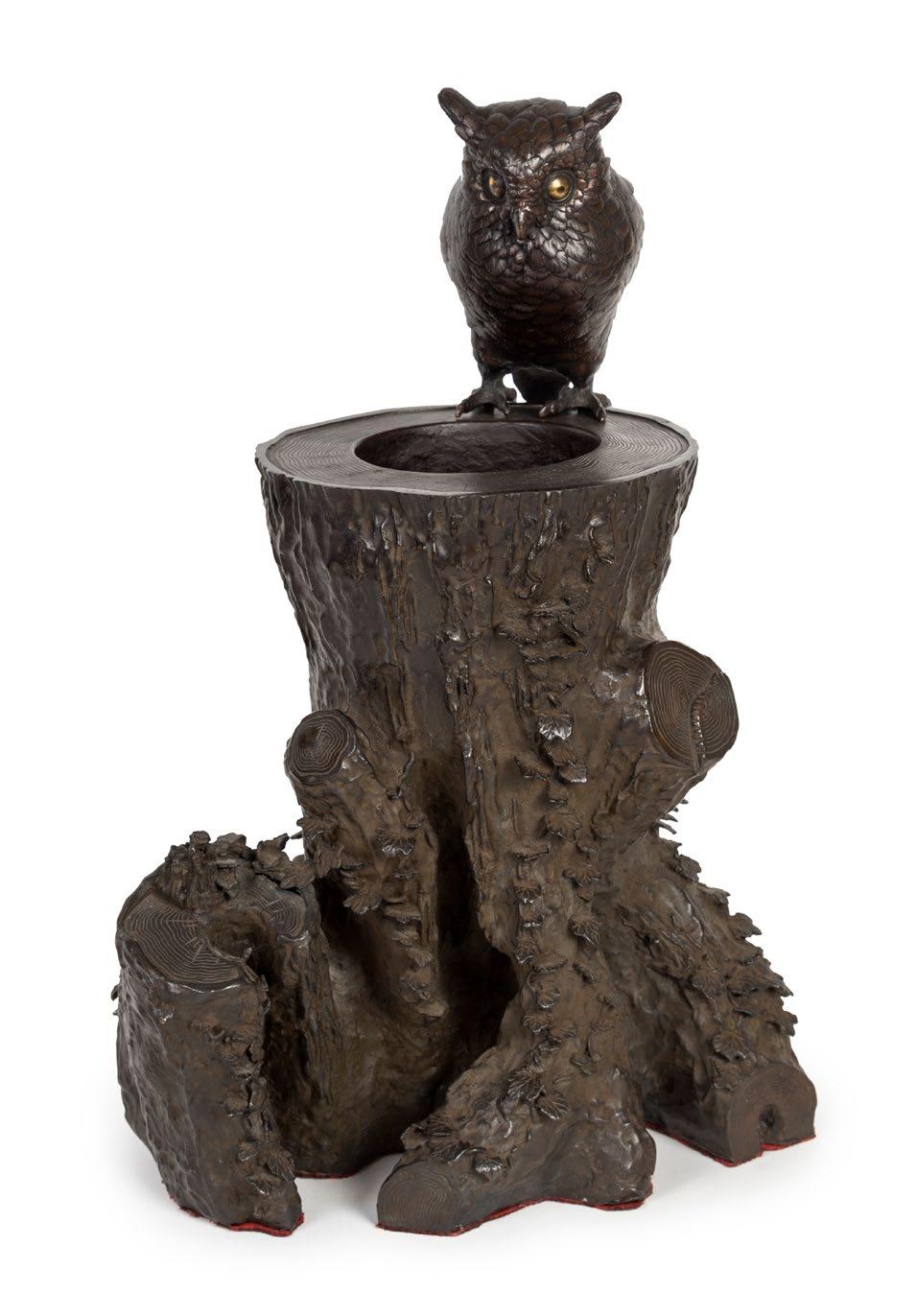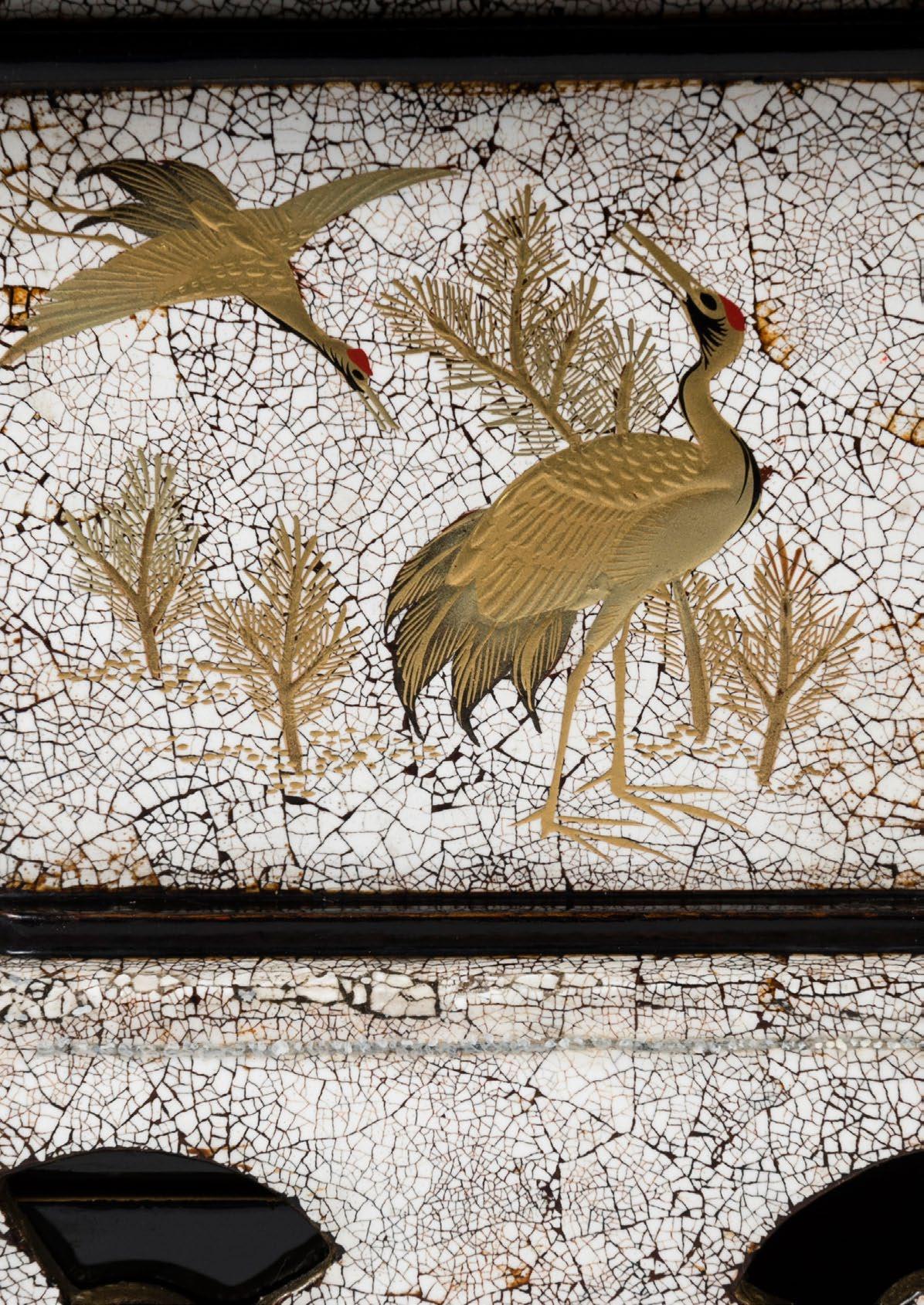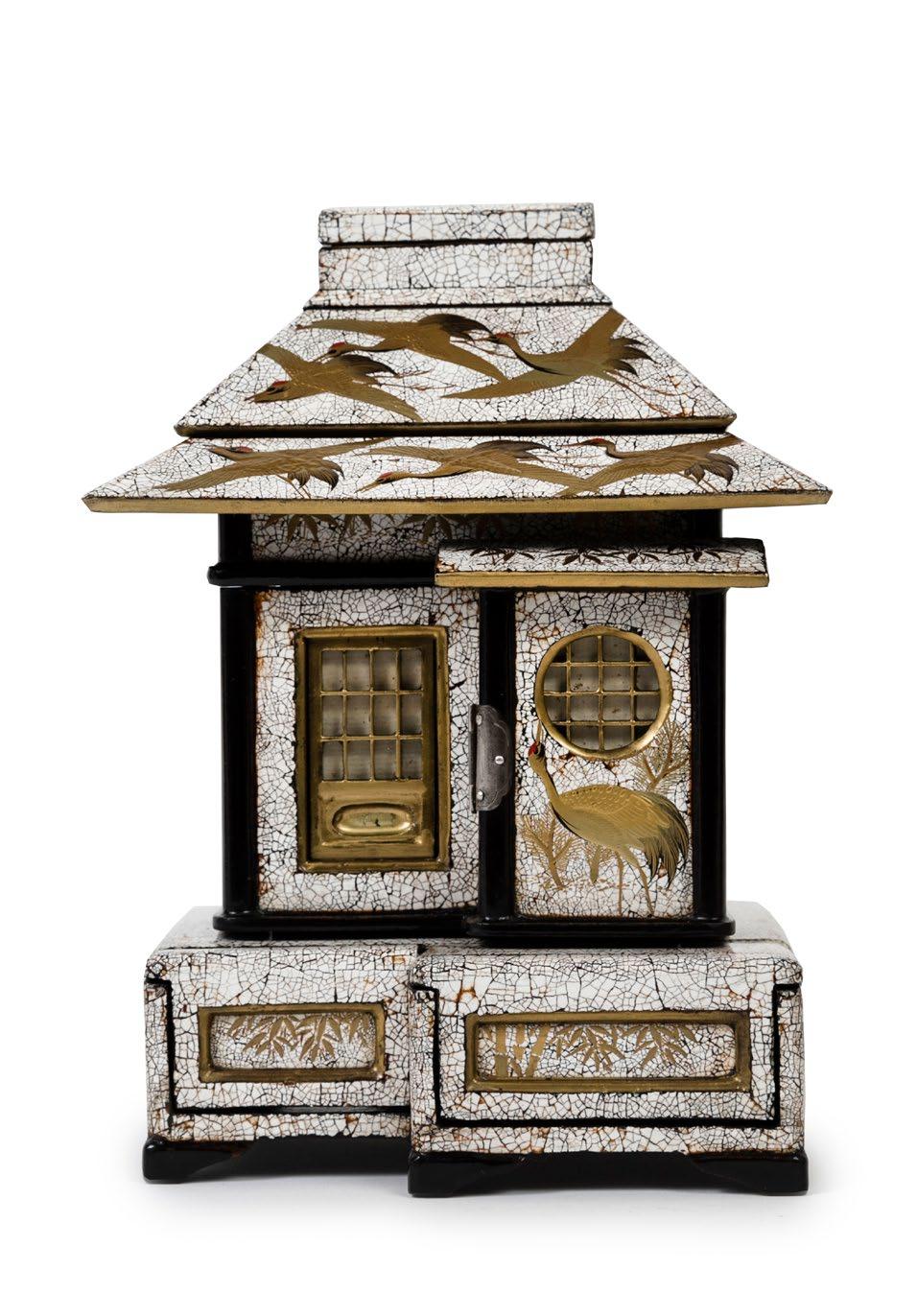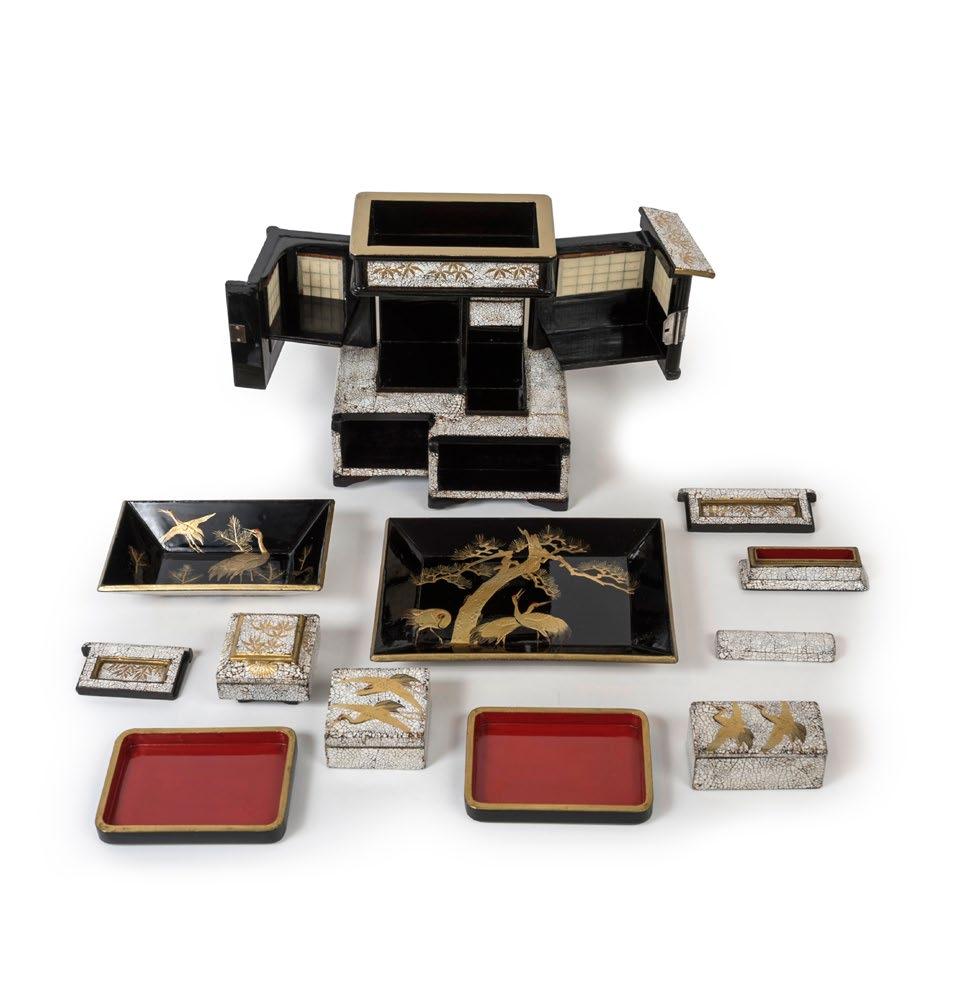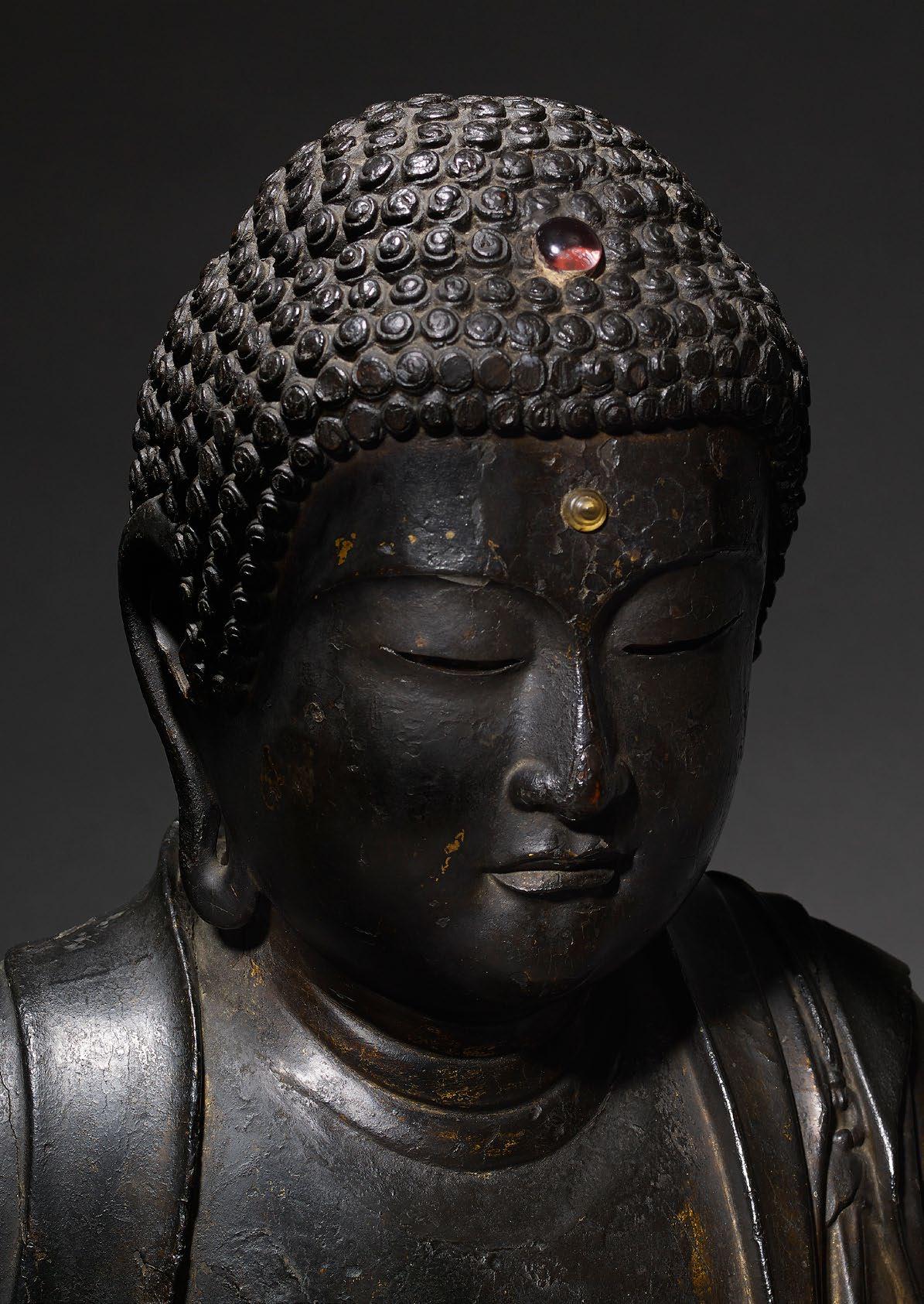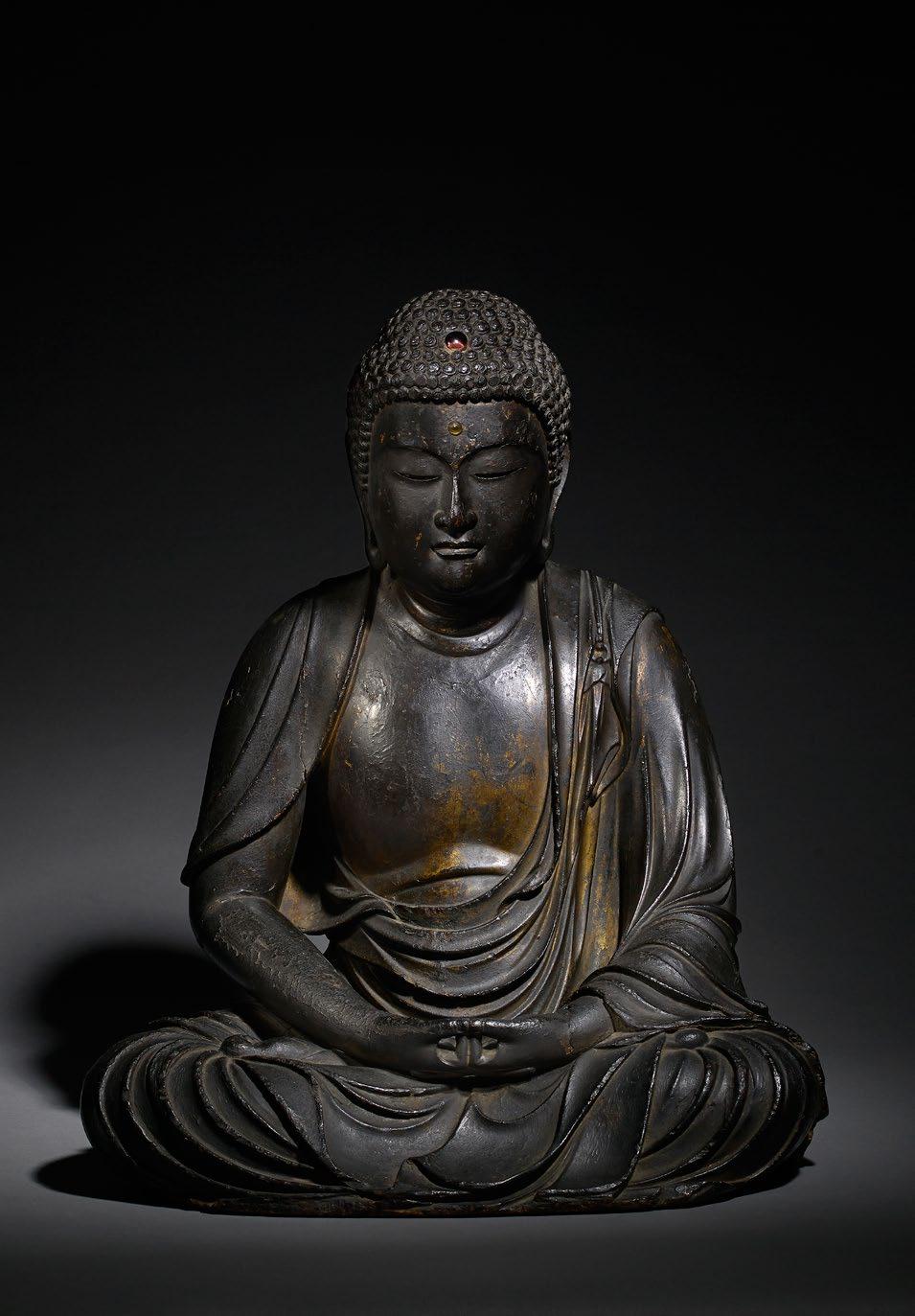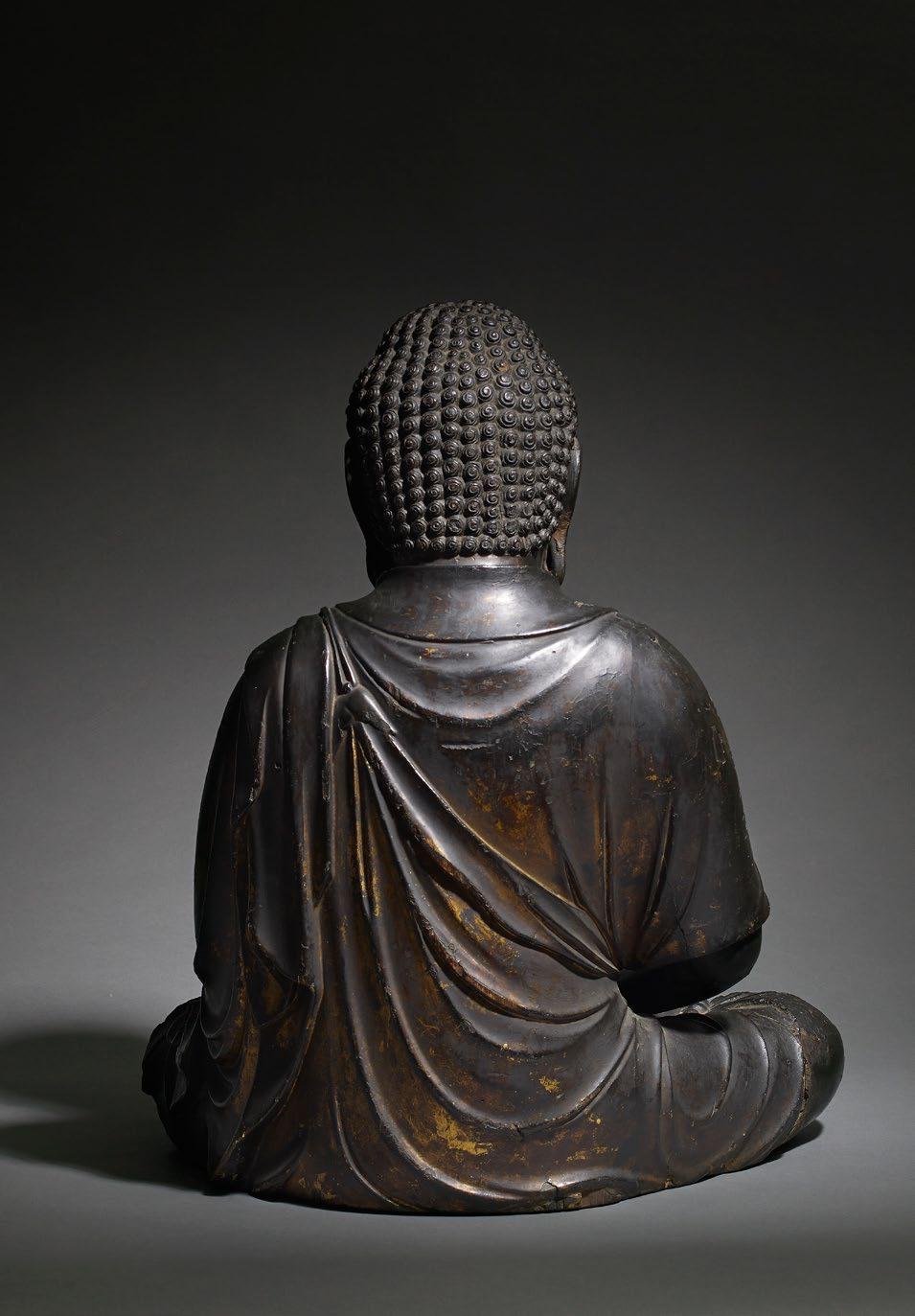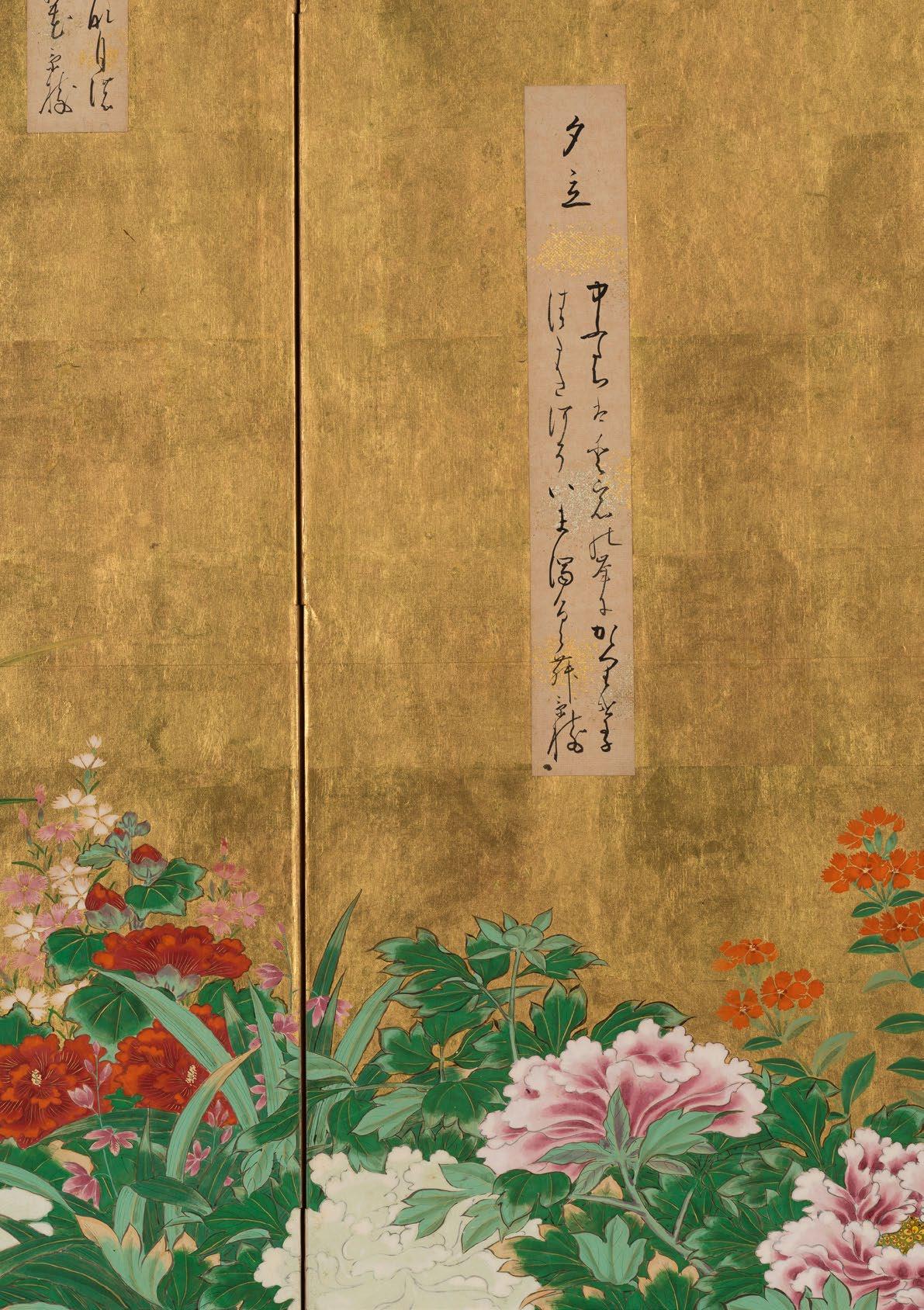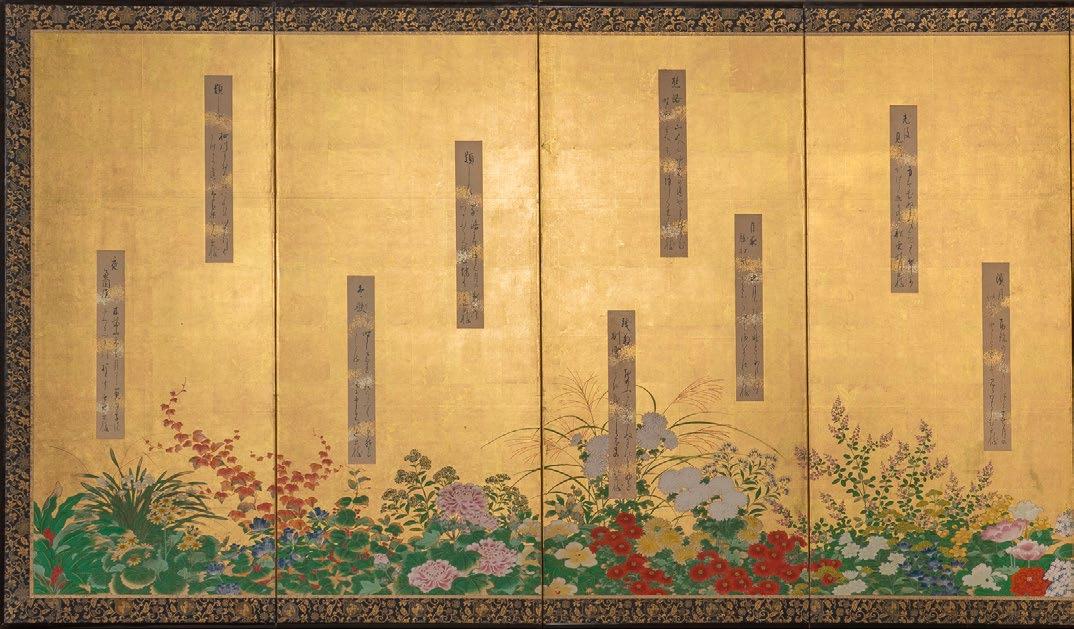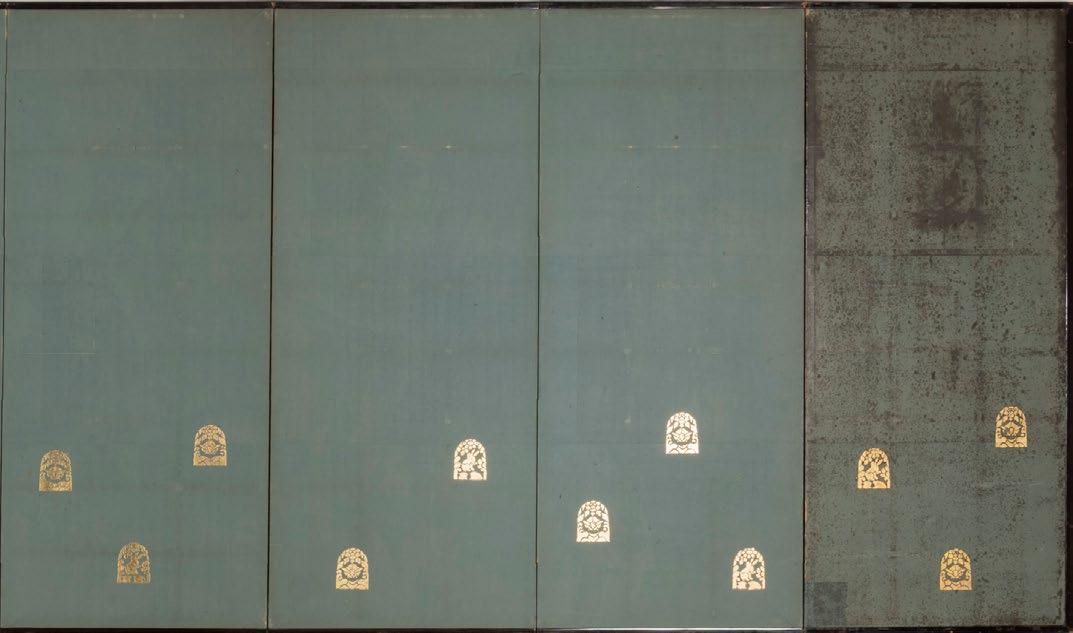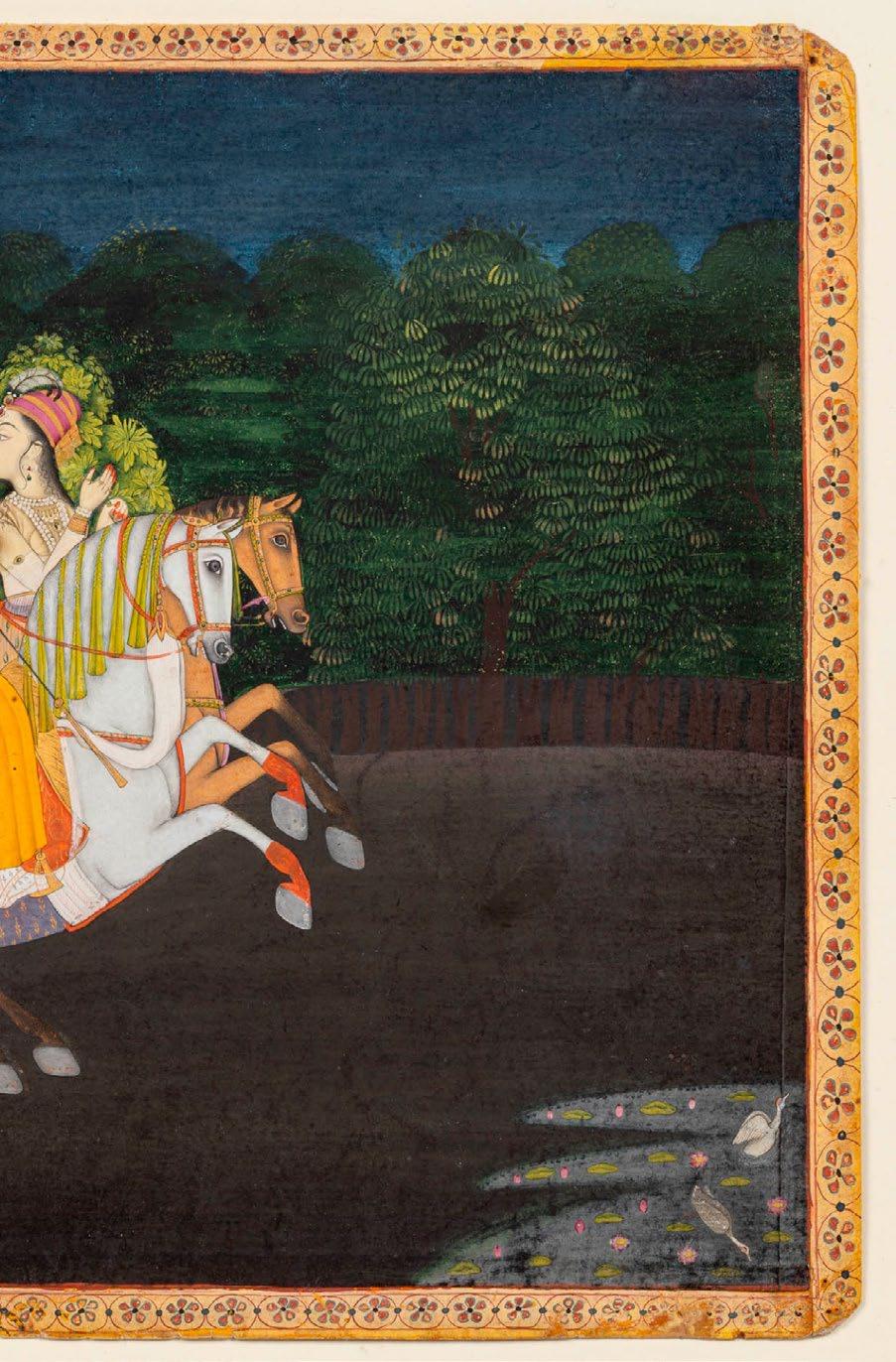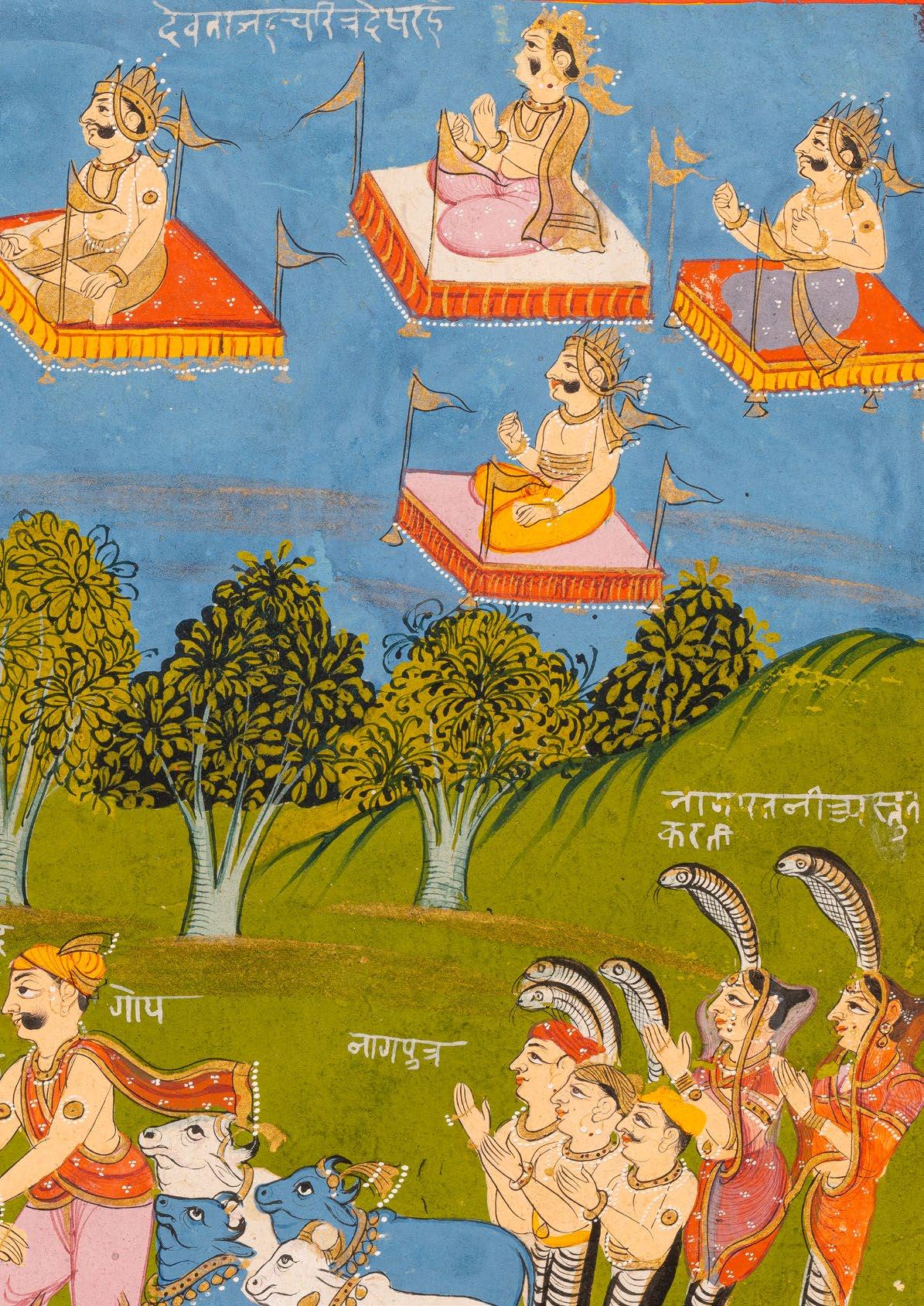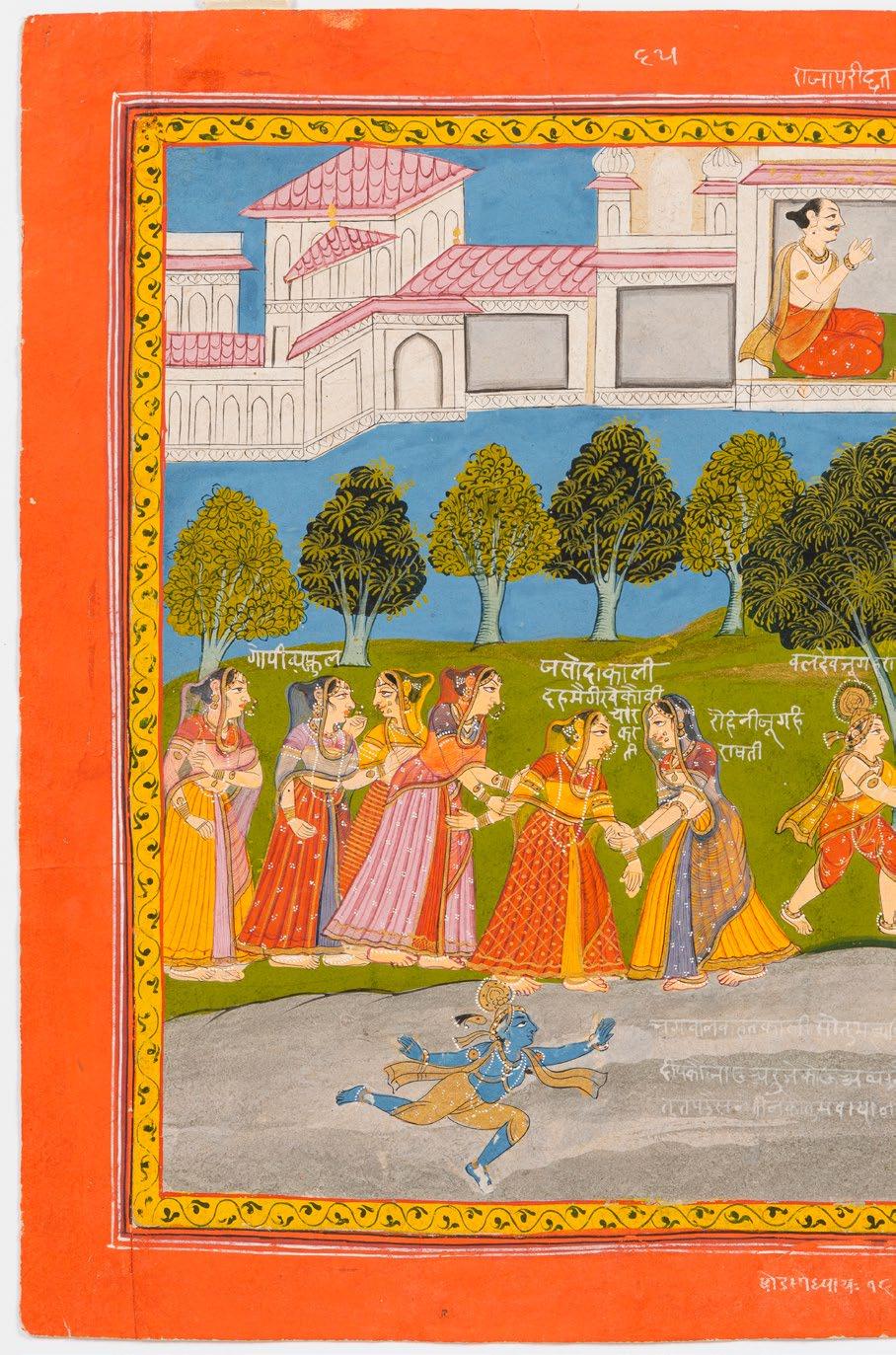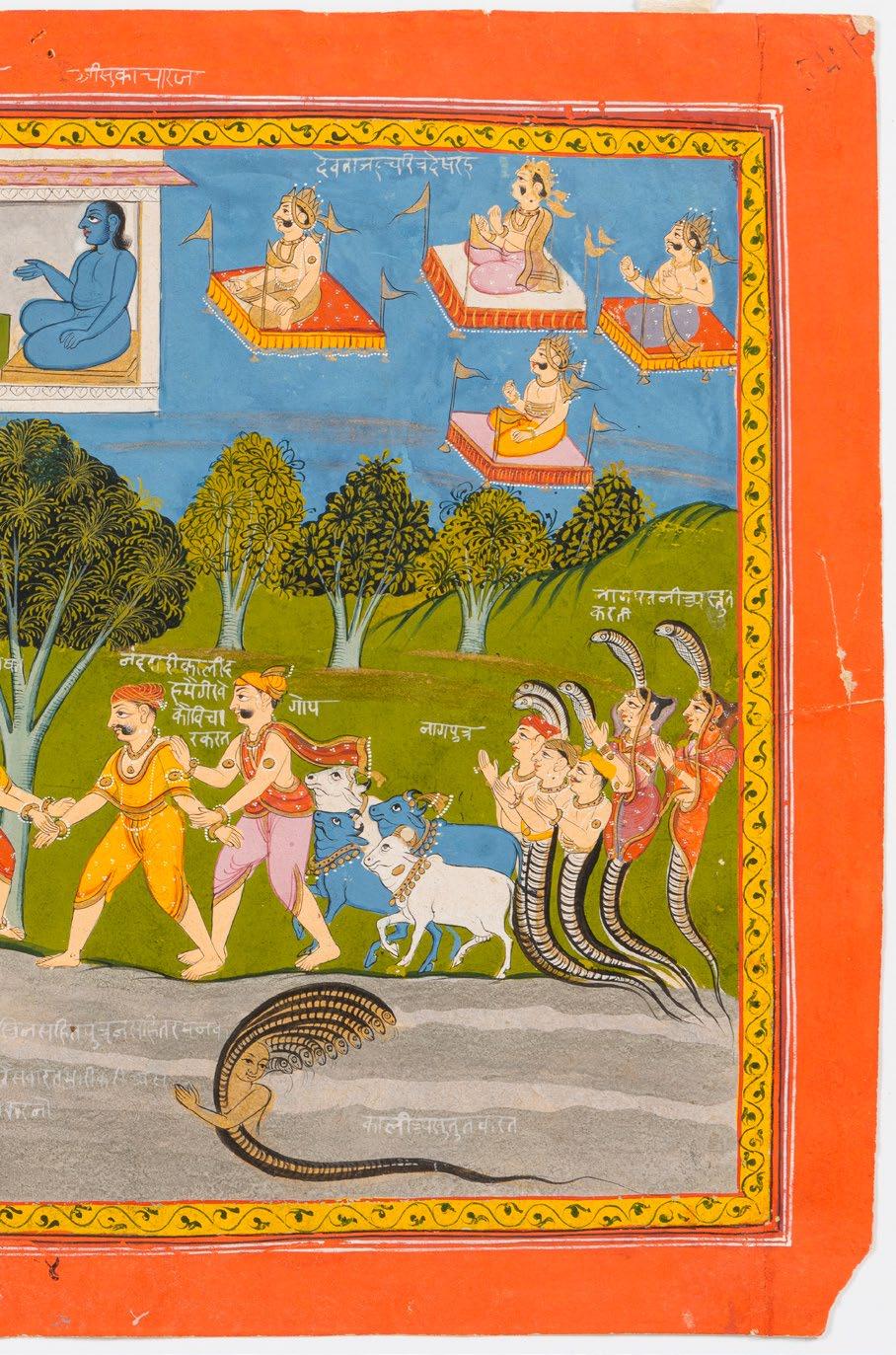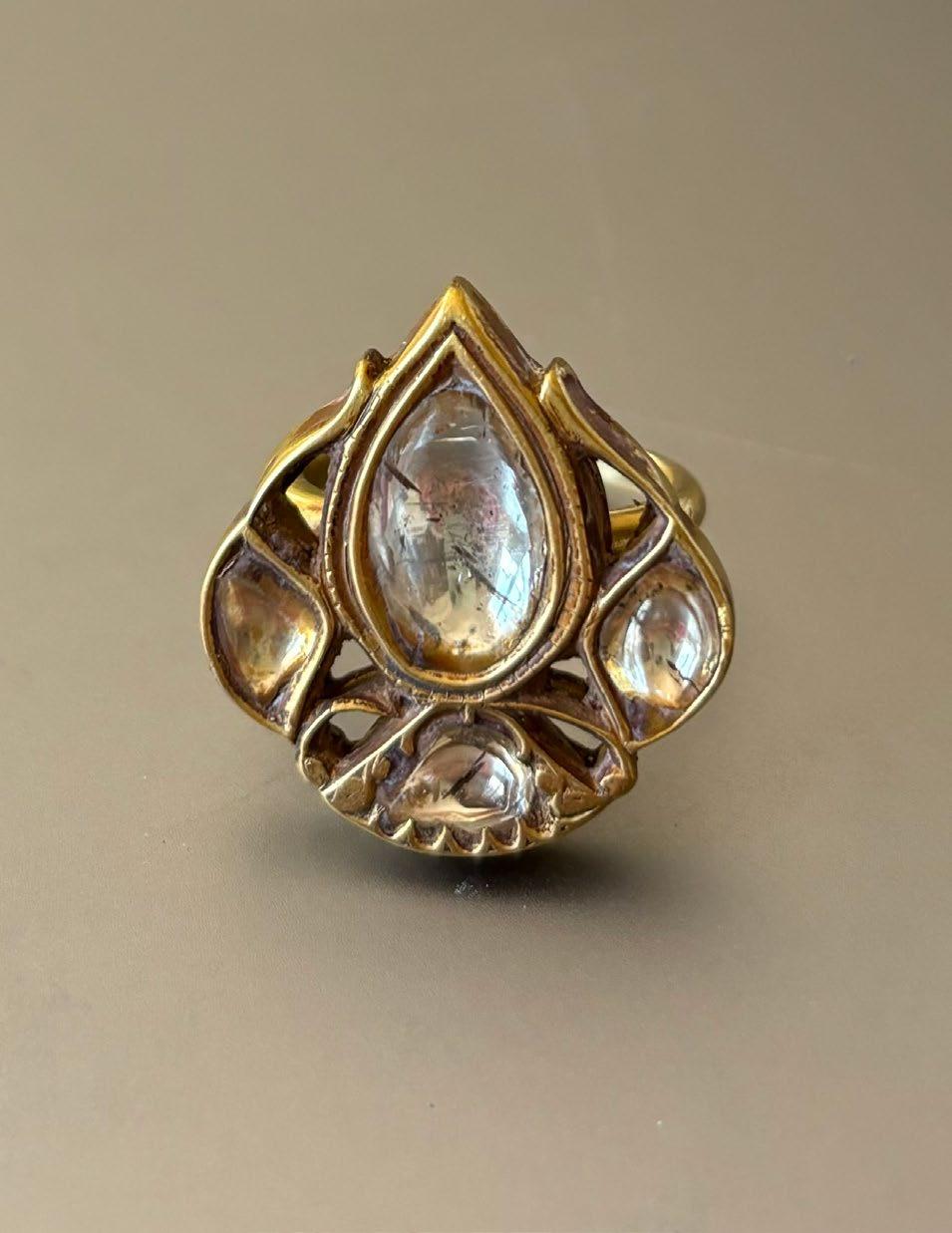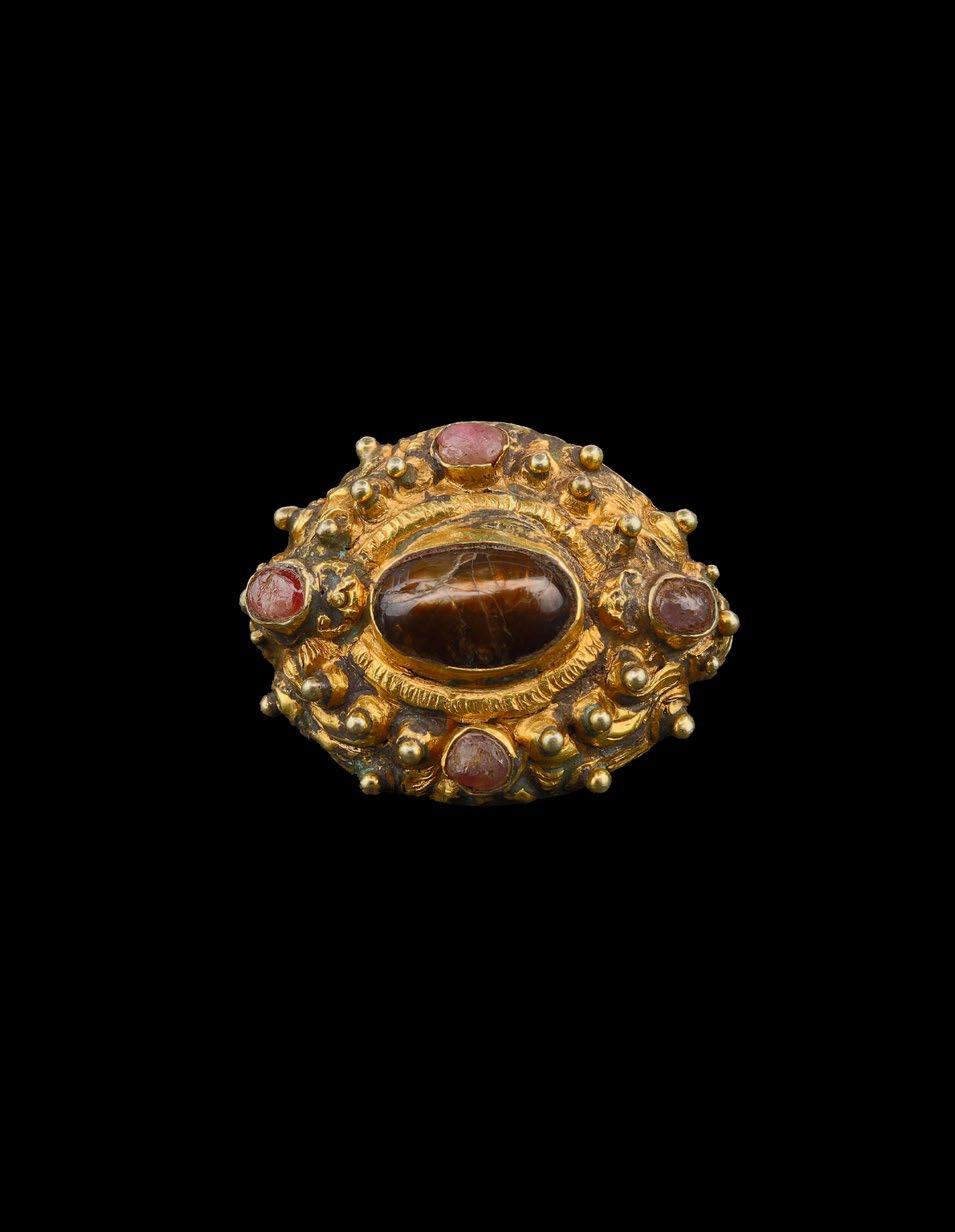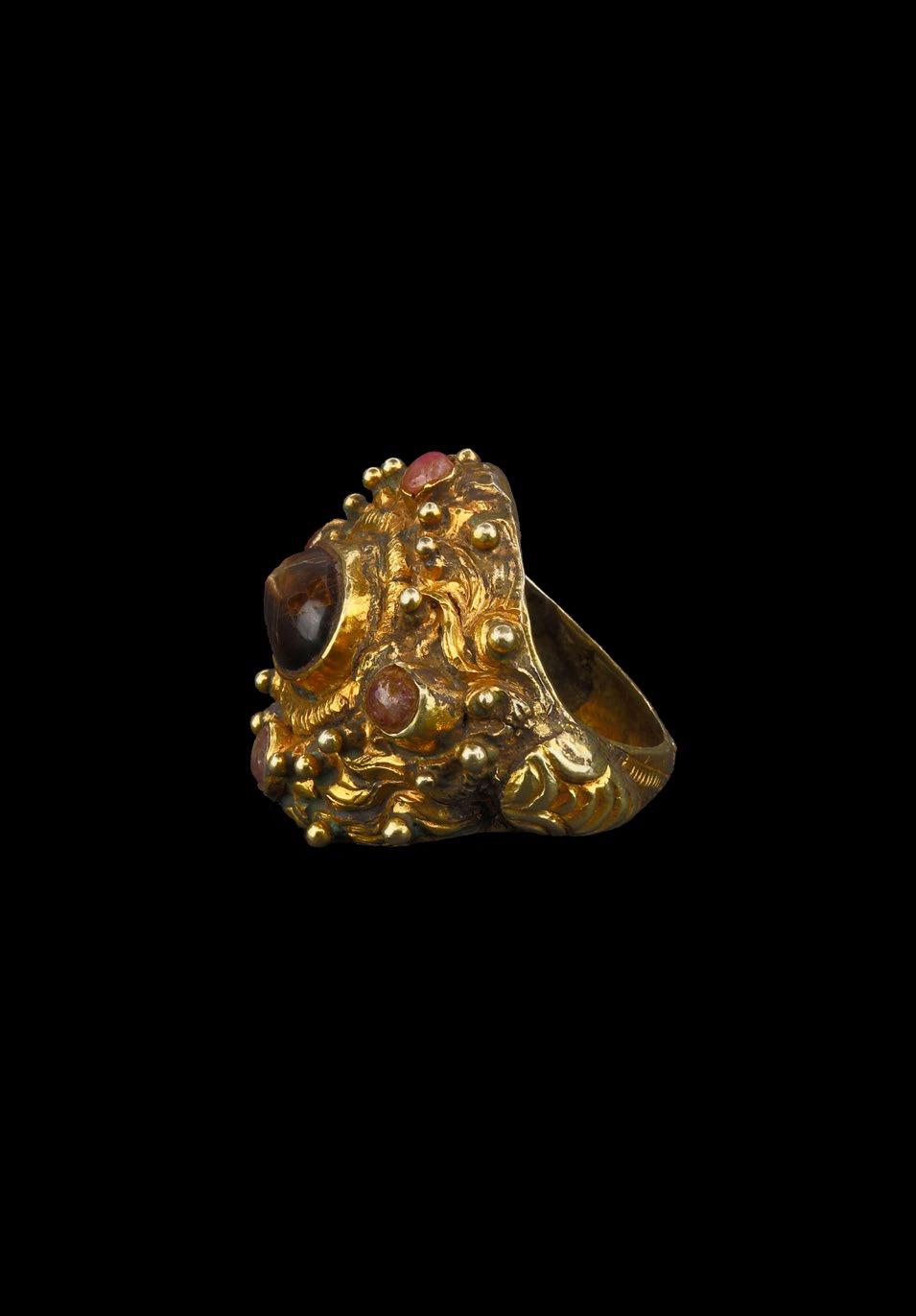JUNE ARTWORK s
Pieces are published and changed each month. The objects are presented with a full description and corresponding dealers contact information Unlike auction sites or other platforms, we empower collectors to interact directly with the member dealers for enquiries and purchases by clicking on the e-mail adress.
In order to guarantee the quality of pieces available in the catalogues, objects are systematically validated by all our select members, who are the in-house experts. Collectors are therefore encouraged to decide and buy with complete confidence. In addition to this the Asian Art Society proposes a seven-day full money back return policy should the buyer not feel totally satisfied with a purchase. Items are presented by categories please check the table of contents.
Feel free to ask the price if the artwork is listed with a price on request.
JA d E p EBBLE-FOR m
my TH i CAL BEA s T
China
Ming Dynasty 16 to 17th century
Fitted zitan stand Width: 6,7 cm
Provenance:
Private English collection, purchased in the 1950s
Price on request
Obj EC t Pr ESE nt E d by: Rasti Fine Art Ltd.
M.:+852 2415 1888 E.: gallery@rastifineart.com W.: www.rastifineart.com
H UNT i N g sCENE
Paiwan Taiwan
First half of the 20th century
Wood
29 cm x 52 cm x 12,5 cm
Provenance:
Pre-War Japanese collection
Price: 3.500 USD
Obj EC t Pr ESE nt E d by: Thomas Murray
M.: + 1 415.378.0716
E.: thomas@tmurrayarts.com W.: www.tmurrayarts.com
This sculpture group presents a narrative of an ancestral hunter with his dogs going after a pair of wild pigs, with the Paiwan totemic serpent circling along the base on both sides… Indigenous Taiwan tribes tended to sculpt more in a flat surface manner...on boats, beams, etc. Sculptures in the round like this are very uncommon.
s p OON W i TH gENEALO gi CAL d i A g RA m
Paiwan Taiwan Wood
23,8 cm x 4,8 cm x 7,6 cm
Provenance:
Pre-War Japanese collection
Price: 1.500 USD
Obj EC t Pr ESE nt E d by: Thomas Murray
M.: + 1 415.378.0716 E.: thomas@tmurrayarts.com W.: www.tmurrayarts.com
pA i NTE d sA dd LE
Tibet
15th–17th century
Gilt and varnished wood and leather, with gilt-iron frames
61 cm x 35,6 cm
Provenance:
Private English collection, by repute
Publication: Himalayan Art Resources (himalayanart.org), item no. 7504.
Price on request
Obj EC t Pr ESE nt E d by:
Kapoor Galleries
T.: + 1 (212) 794-2300
E.: info@kapoors.com
W.: www.kapoors.com
The present saddle’s wooden frame, or saddletree, is richly decorated with gilded and varnished leather panels on the arched front plate (pommel) and rear plate (cantle). The sideboards are equipped with end-board extensions that adjoin the leather varnished panels which are strengthened with iron frames adorned with gold and silver foliate scrollwork. Both pommel and cantle are decorated with dense scrolling foliage with repeated lotus blooms on the top register, and a wish-fulfilling jewel on a lotus base flanked by a pair of makara dragons on the lower. On both panels, the two registers are separated by a solid gold line on a raised central rib— the pommel, however, also includes a third, lower register, separated by a gilt-iron arch and decorated again with scrolling lotus blooms.
This saddle’s floral arrangements can be compared to a 17th-century Tibetan wooden box from a private collection that is illustrated in Wooden Wonders: Tibetan Furniture in Secular and Religious Life (Kamansky, 2004, p.64, cat. no.241), as well as those published in Warriors of the Himalayas: Rediscovering the Arms and Armour of Tibet (La Rocca, 2006, P.105, cat. no. 30). The latter exhibits the same lacquer-like effect, formed by layers of pigmented shellac followed by the gold leaf designs, another layer of shellac, and a final coat of tung oil glaze.
This scarce Tibetan saddle, with its highly decorative gilded and varnished leather panels, is attached to a wooden frame called a saddletree. The front plate (the pommel) and the rear plate (the cantle) are both arch-shaped and connected by a pair of sideboards that have end-board extensions. These extensions are decorated with en-suite leather varnished
panels. For strength, these panels are bordered with iron frames chased with gold and silver foliate scrollwork in a typical Tibetan fashion. The largest panel, the pommel, consists of an outer leather area with an iron trim and a central, raised rib. A smaller leather section sits below this, bordered top and bottom with further iron arches. The cantle is of similar construction, but has a single piece of leather with a raised central rib—it too is bordered with wide, iron arches.
Dense sprays of lush, leafy stems and blossoms frame a central, flaming wish-fulfilling jewel that sits on a lotus base and is flanked by a pair of Makara dragons. All is beautifully, expertly painted in gold and set against a red background. The cantle also has the same decoration and, in my opinion, shows an even better pair of dragons, done so expertly it would rival any figural painting executed on Tibetan leather armour. The floral arrangements and generally naturalistic style of painting are similar to a 17th century Tibetan wooden box from a private collection that is illustrated in the book Wooden Wonders: Tibetan Furniture in Secular and Religious Life (1).
The collection of Tibetan leather armour in the Metropolitan Museum of Art, and those published in Don La Rocca’s 2006 book Warriors of the Himalayas cannot be overlooked, as this saddle shows the same themes and patterns. La Rocca (2) explains that the lacquer-like effect appears to consist of a base layer or layers of pigmented shellac, with the gold designs in gold leaf, and then a further layer of shellac upon which the details are painted in fine black lines, finally to be complemented by a coat of tung oil glaze.
Ri TUAL sKULL mA s K
Tibet or Nepal
19th century
Gilt bronze with polychrome painting and gilding. Partly encrusted red and black patina 24 cm (h.) x 26 cm (w.) x 6 cm (D.)
Provenance:
Private collection, Switzerland
Price on request
This striking mask depicts a skull face with high cheek bones and gaping eyes, his mouth is formed in a grimace. It is surrounded by flames or energetic curls, serving as a powerful symbol in Tantric Buddhism. Such masks were used during Chöd ceremonies and ritual dances to emphasize the impermanence of life and to overcome ego-based illusions. The ornate flame or swirl motifs surrounding the head signify spiritual power or transformation.
They are used in rituals symbolizing the transition to wisdom and are often found as part of the attributes of tantric guardian deities such as Mahakala, Yama or Citipati, aimed at dispelling demons or providing protection.
The skull represents transformation, the triumph over death, and the illusion of the ego.
It is gilded and partially polychromed with traces of red and black pigments still visible, and the reverse side shows a dark patina, characteristic of ritual objects that have seen prolonged use. The gilded finish and red accents enhance the sacred power of the object.
Chöd practice is an esoteric tantric discipline within Tibetan Buddhism, aimed at radically cutting through the ego and attachment. It is one of the most fascinating, mystical, and symbolically rich rituals in Vajrayāna Buddhism.
Obj EC t Pr ESE nt E d by: Farah Massart
M.:+32 495 289 100
E.: art@famarte.be W.: www.famarte.com
C ARv E d W OO d mA s K OF B HA i RAvA
Nepal
15th-17th century
Wood, traces of pigment
Height: 26 cm
Provenance:
Property from the collection of Helen Cunningham and Ted Newbold, acquired from Jaipaul Galleries Inc., Philadelphia, August 6, 1990
Publication: Himalayan Art Resources (himalayanart.org), item no. 7534
Price on request
Obj EC t Pr ESE nt E d by:
Kapoor Galleries
T.: + 1 (212) 794-2300
E.: info@kapoors.com
W.: www.kapoors.com
This striking carved wood mask represents Bhairava, a popular wrathful deity who is a manifestation of Shiva, the god of destruction and transformation. Bhairava is worshipped by both Hindus and Buddhists and can be seen in many temples across South Asia, especially in Kathmandu Valley, Nepal. The mask, dating between the 15th and 17th centuries, is a fine example of the artistic and ritualistic craftsmanship of Nepalese artisans. With its fierce expression, bulging eyes, furrowed brows, and an open mouth displaying two lower fangs—possibly for the insertion of ritual substances or offerings—the sculpture embodies Bhairava’s role as a guardian deity and protector against malevolent forces.
Carved from wood with traces of original pigment, the masks may have been used in festivals, temple rituals, or as a form of protection. Flaming hair and floral elements with small figures decorate the elaborate headdress around his face. The weathered surface and curved edges of the mask seem to point towards centuries of use, adding to its historical depth and spiritual significance as a relic of tradition.
For comparison, reference another 17th century Nepalese Bhairava mask of brass: see Pratapaditya Pal et al, ""A collecting Odyssey, Indian, Himalayan and Southeast Asian Art from the James and Marilynn Alsdorf collection"", New York, 1997, p. 29, no. 25.
A N Op ENWORK CO pp ER A LLOy gAR m ENT p i N
Eastern Iran or Central Asia
2000 BC
Superb colour and patina, bronze
Widht: 35 cm
Provenance: John Kasmin
Oliver Hoare Ltd
Private collection
Price on request
A similar pin in the Louvre-France, was exhibited in the Metropolitan Museum’s ‘Art of the First Cities’ exhibition in 2003 (no. 228). The catalogue entry records that while Pierre Amiet believes the couple are engaged in flirtatious banter, Victor Sarianidi thinks it represents the transmission of a ‘revelation’ from one individual to another. Not that one precludes the other, of course.
The Louvre pin shows the couple beneath a curved lintel, while this example has an elaborate surround; a phallic symbol between recumbent lions below; a wriggling serpent rising on each side; and a balcony above the lintel.
Obj EC t Pr ESE nt E d by: Finch & Co www.finch-and-co.co.uk
E.: enquiries@finch-and-co.co.uk
T.: +44 (0)7768 236921
A pA i R OF E NA m ELLE d dRO p E ARR i N gs
Iran
Qajar dynasty 19th century
Length: 7 cm Price on request
Obj EC t Pr ESE nt E d by: Sue Ollemans M.: + 44 (0) 7775 566 356 E.: sue@ollemans.com W.: www.ollemans.com
OWL ON A TREE s TU mp
Japan
Meiji era (1868-1912)
Bronze
37 cm (h.) x 24 cm (w.) x 17 cm (d.)
Price on request
Obj EC t Pr ESE nt E d by:
Galerie Tiago
M.: 00 33 1 42 92 09 12 –00 33 6 60 58 54 78 E.: contact@galerietiago.com
Bronze sculpture representing an owl on a tree stump covered with ivy. The owl, detachable from its base, has shakudo eyes. It is certainly an Ryûkyû scops owl (Otus elegans), present in the south of Japan in Ryûkyû Islands.
Red fabric glued to the base of the trunk to protect the base and the pedestal (not original).
The owl (fukurô, 梟) symbolizes good luck and protection from hardship. By homonymy, fukuro mean « good fortune coming » (福来郎) or « without difficulties » (不苦労). Furthermore, being able to see in the dark, it is famous to have great wisdom and the power to predict the future.
mi N i TATURE RANKAKU
TEA HOU s E
Japan
Meiji era (1868-1912)
19 cm (h.) x 14 cm (w.) x 10 cm (d.)
Provenance: Maria Pergay Price on request
Obj EC t Pr ESE nt E d by: Galerie Tiago
T.: 00 33 1 42 92 09 12
M.:00 33 6 60 58 54 78
E.: contact@galerietiago.com
Miniature tea house with a crane and bamboo motif in black and gold takamaki-e lacquer on a rankaku (eggshell inlay) base. It has several compartments and trays on the roof, walls and base. Walls opening in the center with a pewter clasp.
A gi LT-WOO d F ig URE OF Amid A B U dd HA s EATE d i N kekka fuza (LOTU s p O si T i ON) THE HAN ds i N jō-in (m E di TAT i ON m U d RA)
Japan Muromachi period 15th century
The head is adorned with crystals representing the byakugō (white spiralling hair) on the forehead and the nikkei-shu (red jewel on the protrusion on top of the Buddha’s head)
50 cm (h.) x 42 cm (w.) x 32 cm (D.)
Provenance:
Captain Jack Simpson
Private collection built between the 1960’s and the 1970’s Price on request
Obj EC t Pr ESE nt E d by:
Gregg Baker Asian Art
M.: +32 (0) 469 498 489
E.: info@japanesescreens.com W.: www.japanesescreens.com
Belief in Amida as Lord of the Western Paradise rose in popularity during the late 10th century. Based primarily on the concept of salvation through faith, it was not only a religion which appealed to a broad range of people, but also a direct assertion of piety against the dogmatic and esoteric ritual of the more traditional Tendai and Shingon sects. In Amida’s Western Paradise the faithful are reborn, to progress through various stages of increasing awareness until finally achieving complete enlightenment.
Images of Amida, lord of the Western Paradise, are known in Japan from as early as the seventh century. Until the eleventh century the deity was most frequently portrayed in a gesture of teaching and was worshipped primarily in memorial rituals for the deceased. However, in the last two centuries of the Heian period worshippers started to concentrate more on the Teachings Essential for Rebirth written by the Tendai monk Genshin (942-1017). The teachings describe the horrors of Buddhist hell and the glories of the Western Paradise that can be attained through nembutsu, meditation on Amida or the recitation of the deity’s name.
Despite the apparent absence of formal variations in the images themselves, during the latter part of the Heian period important changes did occur in the nature of the rituals held in front of the Lord of the Western Paradise. By the twelfth century Image Halls dedicated to Amida were the ritual centres of most complexes. The function of memorial services was expanded so they benefited not only the dead, but also the living. Even rituals with no historical connection to the deity, such as the important services at the start of the New Year, were held there. Of particular significance were the novel ritual practices that were held to guarantee one’s rebirth in Amida’s Western Paradise. Some, such as the re-enactment of the descent of Amida, or the passing of one’s last moments before death
clutching a cord attached to the hands of the deity, were entirely new whilst others, including the use of halls dedicated to Amida as temporary places of interment, reflected the fusion of more ancient practices with doctrines of rebirth.
This type of jō-in mudra is frequently used in Japanese Esotericism, especially in statues of the so-called Esoteric Amida. This particular one is characterised by circles formed with the thumbs and indexes and it stands for a specific rank in the Amida hierarchy.
The symbolism of the jō-in mudra is closely associated with the concept of complete absorption of thought by intense contemplation of a single object of meditation, in such a way that the bonds relating to the mental faculties to so-called ‘real phenomena’ are broken and the worshiper is thus enabled to identify himself with the Supreme Unity through a sort of super-intellectual raptus. In the jō-in the position of the hands is that of the adepts of yogic contemplation. Thus the jō-in symbolises specifically zenjō (ecstatic thought) for it is the gesture which indicates the suppression of all spiritual disquiet in order to arrive finally at the complete concentration on the truth.
The position of the hands in the mudra of concentration derives, in accordance with the tradition, from the attitude which the historical Buddha assumed when he devoted himself to final meditation under the Bodhi tree. This id the attitude he was found in when the demon armies of Mara attacked him. He was to alter it only when he called the earth to witness at the moment of his triumph over the demons. Consequently the position symbolises specifically the supreme mediation of the historical Buddha but also the
Buddhist qualities of tranquillity, impassivity and superiority.
The circle formed by the fingers in this figure means the perfection of the Law because the circle is the perfect form. The formation of the two circles by the two hands representing respectively the world of the Buddhas (right hand) and that of Sentient Beings (left hand) indicates that the Law conceived by the Buddha is sustained by Sentient Beings who integrate themselves into it completely. The two juxtaposed circular shapes represent the accomplishment and the perfection of Buddhist Law in its relationship to all Beings. The right-hand circle symbolises the divine law of the Buddha, the left-hand circle, the human law of the Buddha. Side by side, the circles symbolise the harmony of the two worlds, that of Sentient Beings and that of the Buddha. The fingers are entwined; those of the left hand represent the five elements of the world of Beings and those of the right hand the five elements of the world of the Buddhas.
The two circles of this type of jō-in mudra also stand for the two aspects of cosmic unity; the Diamond World and the Matrix World. These circles are separated from each other because they are formed by two different hands. The circles are joined in this mudra to constitute a single unity which symbolises, by the form of their juxtaposition, the double aspect of a single world and the concept of All-One, the basic principle of Esotericism.
Radio Carbon Dating Ref: RCD-8671
A N E ig HT-FOL d pA p ER
s CREEN pA i NTE d i N
i NK AN d COLOUR ON A g OL d LEAF g ROUN d d E pi CT i N g vAR i OU s FLOWER s OF THE FOUR s EA s ON s W i TH tanzaku (p OE m s L ips)
B y K A gAWA K A g EK i (1768-1843)
Japan
Edo period
18th / 19th century
Each poem slip signed Kageki 119,5 cm (h.) x 405 cm (w.)
Price on request
Obj EC t Pr ESE nt E d by:
Gregg Baker Asian Art
M.: +32 (0) 469 498 489
E.: info@japanesescreens.com
W.: www.japanesescreens.com
The flowers and grasses on the screen include: yamabuki (kerria), tanpopo (dandelions), sakuraso (Japanese primrose), sumire (violet), utsugi (deutzias), botan (peonies), kakitsubata (irises), nadeshiko (pinks), ajisai (hydrangea), keshi (poppies), kikyo (Chinese bellflower), hagi (bush clover), ominaeshi (patrinia), kiku (chrysanthemums), fuyo (cotton rosemallow), fujibakama (fragrant eupatorium), susuki (Chinese silver grass), shion (aster), rindo (Japanese gentian), suisen (narcissus) and omoto (Japanese sacred lily).
Tanzaku are rectangular sheets of paper used for calligraphic poems or paintings. Since the mid-Heian and Kamakura periods, such papers, termed shikishigata, were inscribed with poetic calligraphy and attached to the upper portions of screens or sliding door panels. Their verses coordinated with the paintings to which they were affixed. Often these slips are highly decorated with mica or coloured patterns overlaid with gold or silver cut into small pieces or sprinkled like dust.
Kagawa Kageki (1768-1843) is a Japanese poet of tanka (Japanese short poems), active in late Edo period. He was born in Tottori prefecture and liked reading and calligraphy from an early age. At the age of 15 he is known to have completed the contemporary translation of Hyakunin isshu, a classical Japanese anthology of one hundred poets compiled by Fujiwara no Teika (1162-1241), At 26, he moved to Kyoto and was adopted by the poet Kagawa Kagemoto (1745-1821). In Kyoto, he changed his name to Kageki and served the Tokudaiji Family, one of aristocratic families of the imperial court. He attended many aristocratic utakai (poetry reading gathering) where participants read tanka poetry on a common theme in front of an
audience. Each poem slip on this screen has a theme at the top of the sheet and it is possible that these poems were read at one such poetry meeting.
n.b There are two small repairs to the gold. One on the third panel from the left and another on the sixth panel.
1
霞中瀧 みよしのの 滝のしら波 うらがす み 花かとみゆる 春はきにけり
Waterfall in a mist
White wave of Miyoshino waterfall making the bay misty, resembling flowers, the spring has come
2
夕齢冬 夕暮れは 月もこがねの 色にで て てりかそかえせ 山吹の花
Evening of winter
In the evening the colour of the moon also becomes golden reflecting the colour of the yamabuki (golden Japanese rose)
3
河暮春 年どしに ながるる春を 川波の かえるがえると 思いけるかな
River of late spring
Every year spring comes and goes like recurrent waves of the river Is this not so?
4
貴賤更衣 我がふる かとりの絹は よき人 の しら重ねより 涼しかりけり
Changing wardrobe of a noble and a humble I touch finely woven silk of a noble it feels cooler than usual summer robes
5
卯の花 我が宿の 垣根に咲ける 卯 の花は あわれにしらぬ 月夜なりけり
Utsugi (deutzias) Flower of utsugi blossoming under the hedge of my house would pitifully not know the beauty of this moonlit night
6
?女待つほととぎす 妹とわが二人 きかむの一声を 寝 たくも 惜しむ 子 規かな
Awaited hototogisu (cuckoo)
Without sleeping we are waiting to hear hototogisu yet a song is still being withheld
7
夕立 夕立は 登窓(登装・地名?)の峯( みね)に かかりけり 清たき河がいま濁 るらむ
Evening shower
An evening shower has just fallen on the mountain peak, clear river now getting cloudy
8
題しらず 朝踏めど 露もしめらぬ 水 無月の のづらに咲ける 月草の花
Title unknown
Walking but no dew in the field where Tsukikusa (dayflower, ‘dew herb’) flowers on a June morning
9
居待月(いまちづき) 思うどち 居待ち の月もかたむ(ぶ)きぬ いざ転年に 今 宵あかさん
Imachiduki (late autumn moon) With close friends even the late autumn moon is setting it is almost the end of the year let’s stay up all night
10
松間月 一むらの 松の木の間は 照る 月の かくれたるより うたわれにけり
Moon amongst pines
The moon shining through a pine forest, it is not something hidden but celebrated
11
浜月似雪 馬珠の くろどの浜に 住む 月の なんと雪とまで 見てわたるらむ
Moonlight on beach resembling snow
With a horse crossing the Kurodo beach how beautiful illuminated by the moonlight resembling snow
12
先後見月 身ははしるぬ(身に走ぬ) ま えもきいたかく けりげり(けりにけり) かわらぬかのは秋夜の月
The moon I see before and after I have run forward and upward over a long distance yet the autumn moon remains unchanged
13
月夜聴松風 照る月は 高く離れて あらし のみ おりおり松に さわるよわかな
Listening to the wind in the moonlit pines
The night with the moon shining so high above the sky only the strong winds touch the pines now and then
14
樵路時雨 山人の ゆうべの道や たどる らむ かへるがへるも 峰・しぐれかな
A late-autumn shower in a mountain track In late-autumn evenings a hermit in a mountain making his way home gets caught in a shower again and again
15
残 菊馴雪 昨日まで先とぬ色にみしもの を 雪をいただく白菊の花
Remaining chrysanthemums, fitting snow
Until yesterday colour was not there, today is different snow-crowned white chrysanthemums
16
題しらず 家路まで 送らん月の 影ながら わかれて帰る 心地が薄れ
Title unknown
The moonlight illuminates as if it escorted me home, healing my pain for parting from you
17
冬獣 時しもあれ 雪おおてみて いか り獲物の たける狩場に にこ(ご)れなり
Winter beasts
Now of all times the hunting field in deep snow beaten by raising beasts freezes firmly
18
題しらず 杣 川に おろすいかだの い かにして かわかり道は くだりはてけ ん
Title unknown Logs rafted down the river I wonder, how each journey will end?
19
夜過関屋 木幡山 ふけたる月に せき もりの ゆづるつな引 おときこゆなり
Passing a checkpoint in the night
In Kohatayama against the setting moon the sound of bows drawn by a barrier keeper as a charm against evil"
A JA pANE s E E xp ORT
LAC q UER p LA q UE d E pi CT i N g THE pALACE OF vER s A i LLE s ATTR i BUTE d TO THE sA s AyA W ORK s HO p
Nagasaki, Japan
Circa 1788
Lacquered on copper ground, decorated in gold hiramaki-e and silver togidashi-e, inscribed to the reverse 'Vue de Versailles'. 16 cm (h.) x 28,5 cm (w.)
Provenance:
By repute, commissioned by Johan Frederik, Baron van Reede tot de Parkeler (1757-1802) 1788
Barend Groen Antiquaire, Amsterdam (1966)
G. de Boer, Amsterdam
Purchased by the previous owner from a dealer in London Price on request
Obj EC t Pr ESE nt E d by: Zebregs&Röell
+31 6 207 43671 dickie@zebregsroell.com www.zebregsroell.com
On the back of the small painting frame in which this plaque was framed, the name of Baron Van Reede tot de Parkeler was inscribed. In the archives of the Freemasons, this man is recorded as a frequenter of prostitutes. In the lodge archive, it states:
'Ziende men hem in de Bijbel leezen, en bidden, in het midden van een dozijn Maccassarasche en Javaansche hoeren die hem tot wulpsheid aanlokten.'
Which translates to: ’We saw him reading the Bible and praying, in the midst of a dozen Maccassara and Javanese whores who tempted him to lasciviousness.’
Japanese lacquer panels featuring European prints and drawings began to emerge in the late 18th century. Many were produced in Nagasaki, commissioned by directors of the Dutch East India Company (VOC), including Commander Isaac Titsingh, who served as Opperhoofd (the chief commercial representative of the VOC in Japan) in 1780 and again from 1782 to 1784, and Johan Frederik Baron van Reede tot de Parkeler (1757–1802), who held the same position in 1786 and 1788–89. Due to Japan’s strict isolationist policy (Sakoku) under the Tokugawa shogunate, the VOC operated under special exemption within the confines of their trading post in Deshima, giving them the exclusive ability to commission Japanese artworks such as these lacquer panels. In 1793, Baron van Reede tot de Parkeler sent a collection of Japanese objects to his father in the Netherlands, including, as described in a detailed list and accompanying letter, “two oval portraits or busts of Frederick the Great, one lacquered in colors and the other inlaid…”.
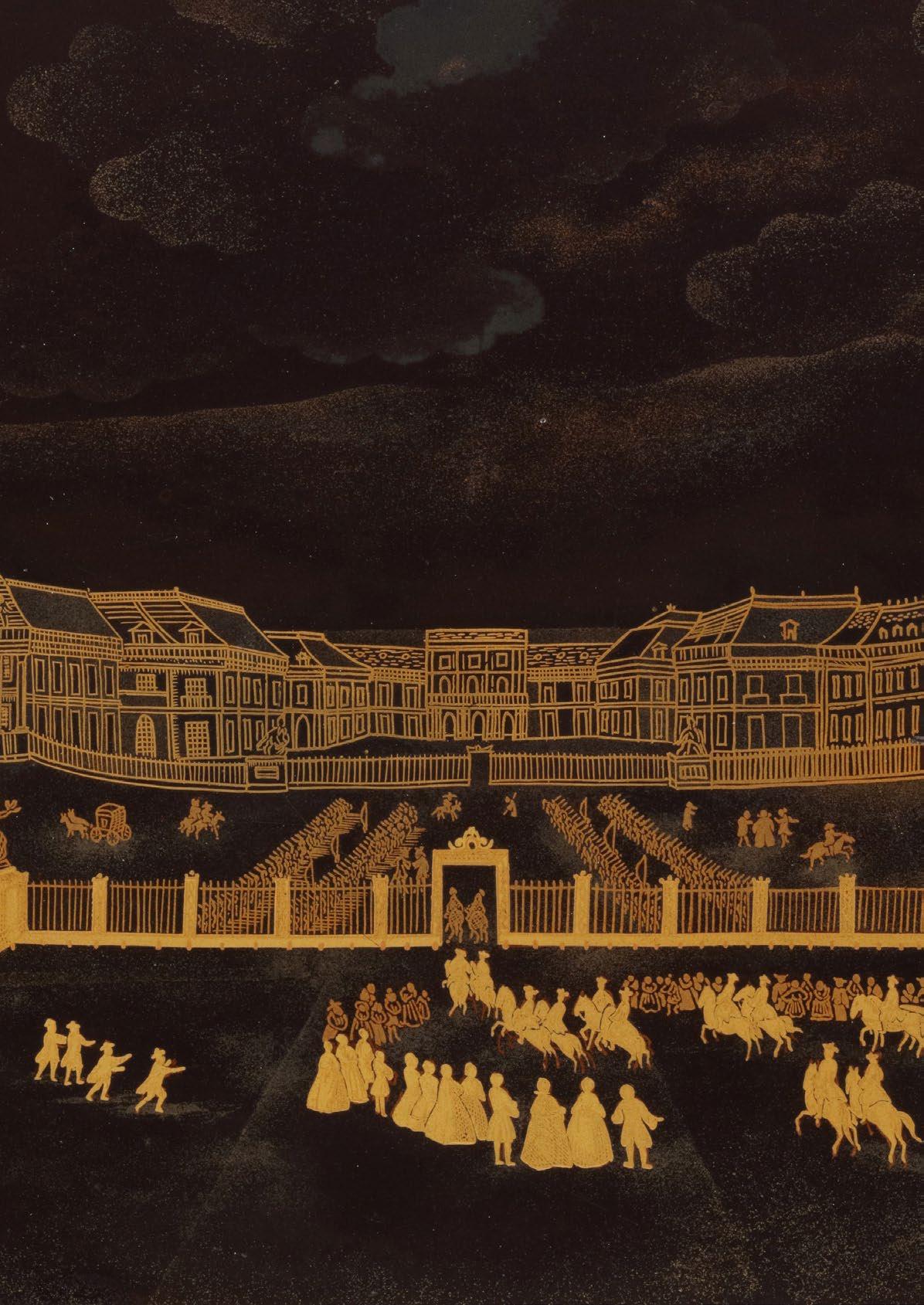
Beyond portrait plaques, topographical views of European and Oriental subjects were also produced, often based on printed engravings. These included landscapes, naval battles, and marine scenes. A notable series commissioned by Baron Reede in 1788 featured views of Rome, including St. Peter’s Basilica, the Trevi Fountain, the Spanish Steps, and various palaces and churches. These panels were inscribed on the reverse with place names in script, similar to the present view of Versailles (illustrated in O. Impey & C. Jörg, Japanese Export Lacquer 1580-1850, Amsterdam, 2005, pp. 52-54, figs. 67-78). One example depicting the Palazzo Corsini, is now housed in the Tokyo National Museum.
A set of four large lacquer panels (each approx. 37 × 53 cm), depicting the Battle of Dogger Bank (5 August 1781), was based on a series of engravings by Frederik Murat and Matthias Sallieth published in 1782. These panels were produced in 1792, signed ’Sasaya’, and are now part of the Rijksmuseum collection in Amsterdam (NG-NM-6308, 6309, 6310, 6311). Two additional panels in the Rijksmuseum, also signed ’Sasaya’ and dated 1792, depict Ancient Rome, each inscribed with “ROME in its Original Splendour” and “ROME DANS Sa Splendeur Ancienne” (BK-1960-29-A and B). Based on these examples, the Versailles panel can likely be attributed to the lacquer producer Sasaya. Rather than a lacquer artist himself, Sasaya was believed to be a businessman or workshop manager, overseeing commissions from Dutch clients such as van Reede and subcontracting woodworkers, lacquer artisans, and inlay specialists to complete the intricate joinery, lacquering, and pearl inlay work. Initially based in Kyoto, he later possibly relocated most of his operations to Nagasaki.
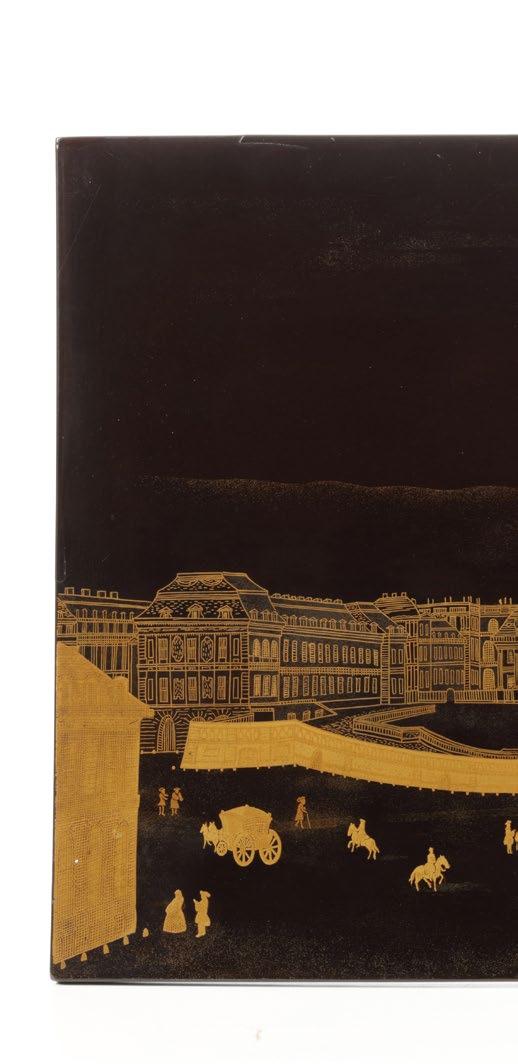
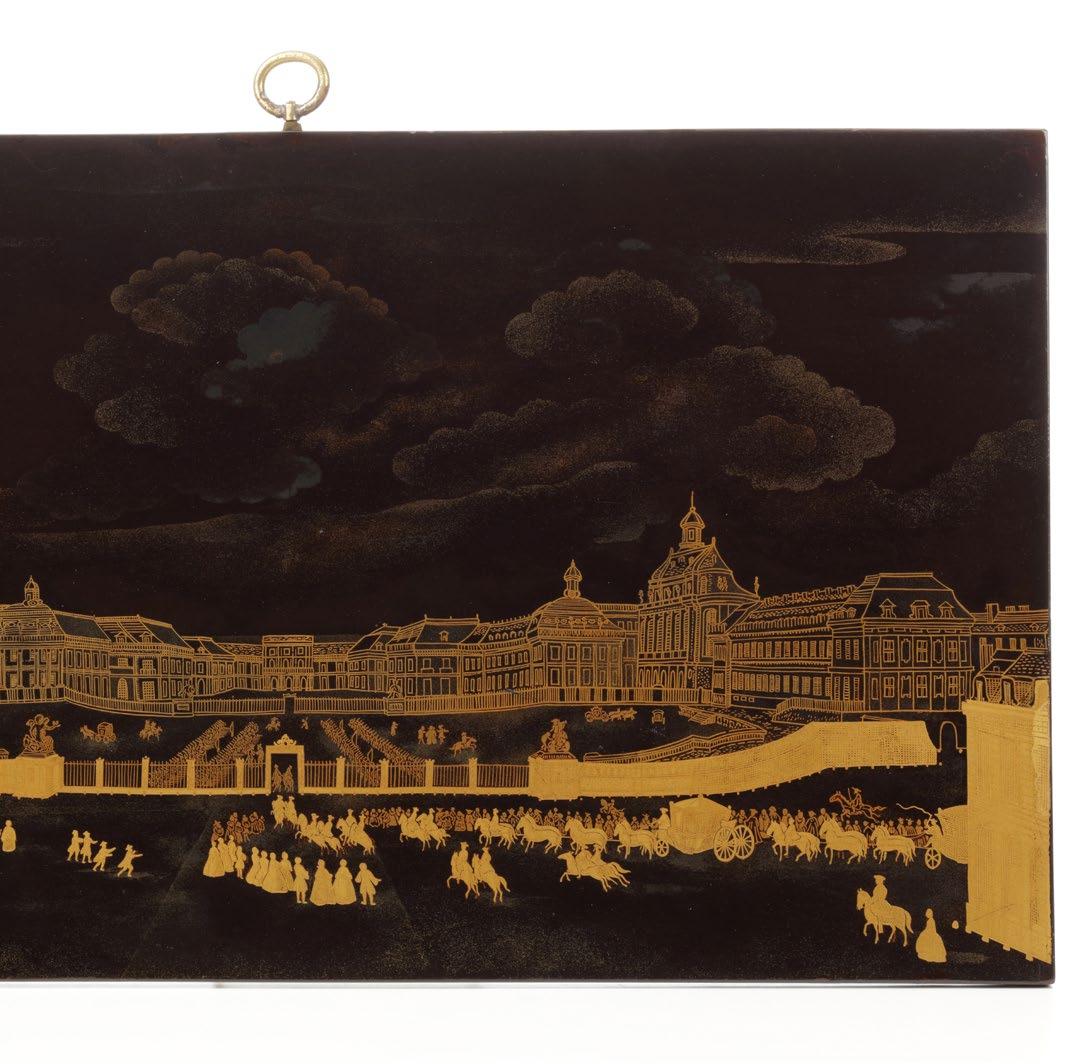

B A z B AHA d UR AN d
RU pm AT i Ridi N g AT
Nig HT
Mughal, probably Awadh, India
Circa 1800
Opaque watercolor heightened with gold on paper
Image: 19,7 cm x 25,7 cm
Folio: 21,2 cm x 27,6 cm
Provenance:
The Ehrenfeld collection, California
Sotheby’s New York, 6 October 1990, lot 19
Carlton Rochell Asian Art, New York
The Sterling collection, U.S., 2011
Publication:
Daniel J. Ehnbom, Indian Miniatures:
The Ehrenfeld collection, New York, 1985, no. 30, pp. 76-77
Price on request
Obj EC t Pr ESE nt E d by:
Kapoor Galleries
T.: + 1 (212) 794-2300
E.: info@kapoors.com
W.: www.kapoors.com
Baz Bahadur of Mandu, the last King of the Malwa Sultanate (r. 1555-1562), is depicted here riding with his beloved Rupmati on a pair of horses. They gallop in sync through the darkened night landscape, rearing up in perfect unison as the lovers gaze into each other’s eyes. They seem to glow with an otherworldly radiance, their energy illuminating the green bush behind them like a spotlit stage. A lotusfilled pond with a pair of birds bathing is depicted below.
Although the Muslim Baz Bahadur and the Hindu Rupmati were historical figures who lived and loved during the reign of the Mughal Emperor Akbar, their inspiring story has transcended into folklore and poetry. Baz Bahadur was initially led to Rupmati by music he heard on a hunt. After years of palatial and romantic bliss, the two were divided by the 1661 Mughal conquest of Mandu, whereupon Rupmati chose death over being taken captive. Thus, they are the archetypal tragic lovers—an Indian version of Romeo and Juliet—and are represented here in this stunning miniature as idealized types, raised to heroic perfection.
While it is apparent that these are not actual portraits, we can nevertheless immediately recognize them as Baz and Rupmati with the help of longstanding visual conventions associated with their story: Baz Bahadur bears a long spear, two quivers of arrows, a bow, and a sword. Their eyes meet as their caparisoned horses lift them in a united stride.
K R is HNA AN d THE sER p ENT K AL iyA
Madhya Pradesh state, India
Kingdom of Datia Circa 1800
Gouache heightened with gold on prepared paper
35,5 cm x 27,9 cm
Provenance:
Park Avenue collection, acquired throughout the 1970s and 1980s
Sotheby’s New York, 19 May 1982, Islamic Works of Art, Lot 13
Price on request
Obj EC t Pr ESE nt E d by:
Kapoor Galleries
T.: + 1 (212) 794-2300
E.: info@kapoors.com
W.: www.kapoors.com
Created in the former kingdom of Datia around 1800, this paintings depict a pivotal episode from the Bhagavata Purana in which Krishna subdues the serpent king Kaliya, a multi-headed serpent (naga) seen on the lower right of piece. The scene unfolds along the banks of the Yamuna River, where Kaliya’s venom had poisoned the waters, endangering the health and lives of the region’s inhabitants. In response, Krishna leaps into the river to challenge the serpent’s many hoods, asserting his divine authority. The wives of Kaliya, depicted with serpent-like lower bodies on the upper left, beseech Krishna for mercy as they recognize his supreme power. Their pleas are met with compassion, and Krishna spares Kaliya, restoring purity to the river and harmony to the land.
The composition is rich in narrative details, with expressive figures and inscriptions, verdant landscapes, and divine beings observing the event from above. Executed in vibrant gouache with gold highlights, this work exemplifies the refined artistic tradition of Madhya Pradesh, blending dynamic movement with meticulous detail to convey Krishna’s role as both a protector and a divine force of balance.
Compare this artwork to two similar depictions of the scene: one nearly identical example in the Asian Art Museum’s collection, The Encounter Between the Hindu God Krishna and the Serpent Kaliya, from a manuscript of the Bhagavata Purana (Object No. 2005.64.39), and an alternate representation in the Harvard Art Museum’s collection, Krishna Quells the Serpent Kaliya (Painting, Recto), an illustration from the Bhagavata Purana (Object No. 1974.112).
L AR g E FLAT-CUT di A m ON d R i N g
South India 19th century Size: US 6,5
Price on request
Obj EC t Pr ESE nt E d by: Sue Ollemans
M.: + 44 (0) 7775 566 356 E.: sue@ollemans.com W.: www.ollemans.com
A L AR g E g i LT B RON z E pR i E s T’s Ri N g
Bali, Indonesia
19th century
Tiger’s eye and rubies
Size: US10
Price on request
Obj EC t Pr ESE nt E d by: Sue Ollemans M.: + 44 (0) 7775 566 356 E.: sue@ollemans.com W.: www.ollemans.com
